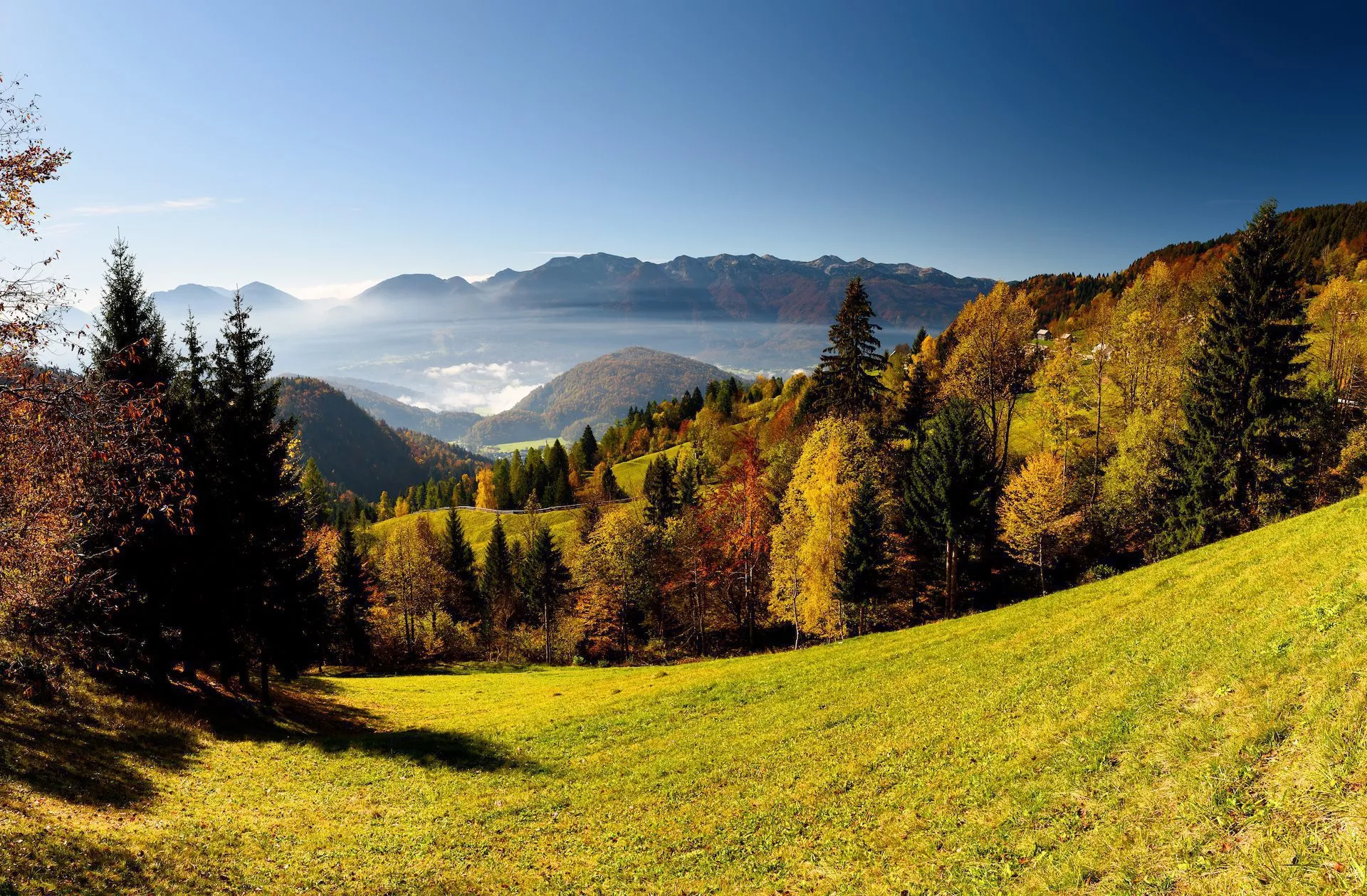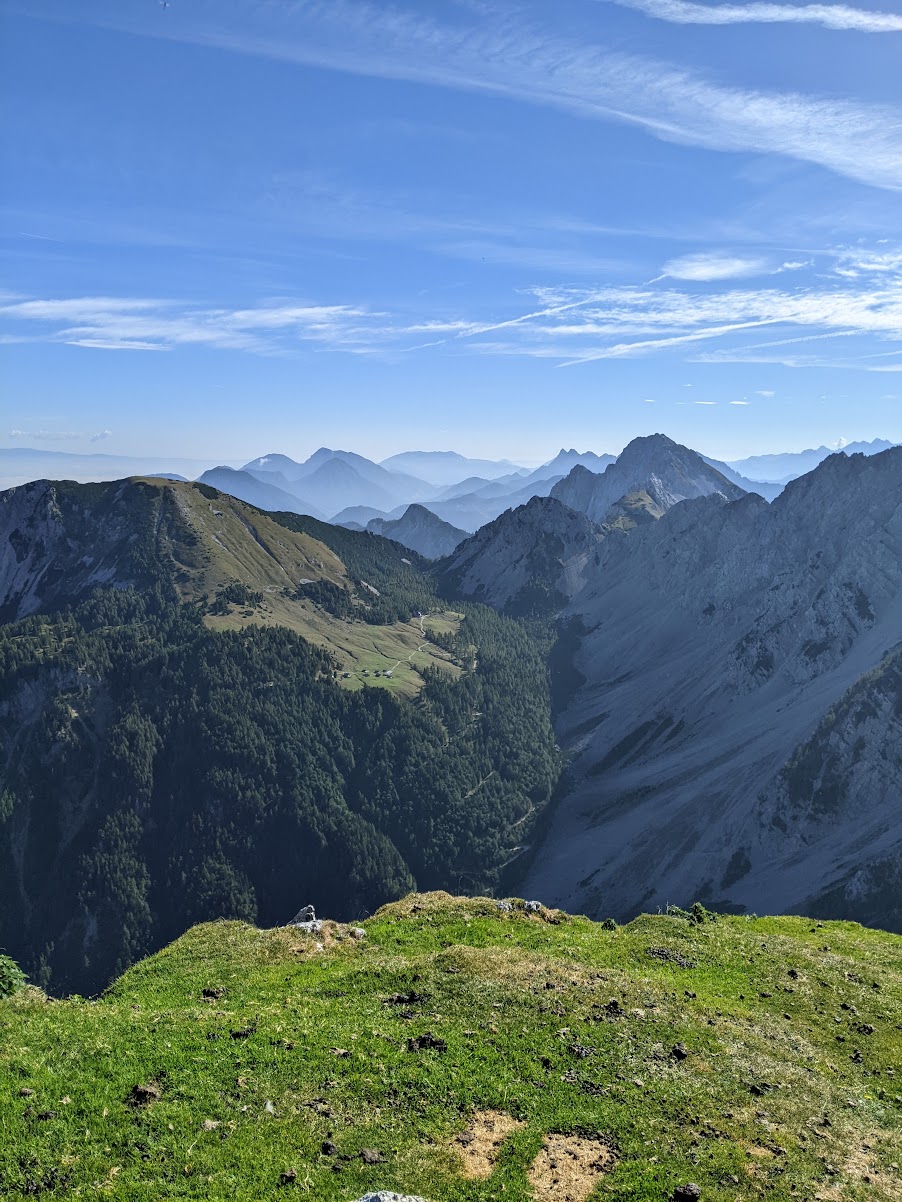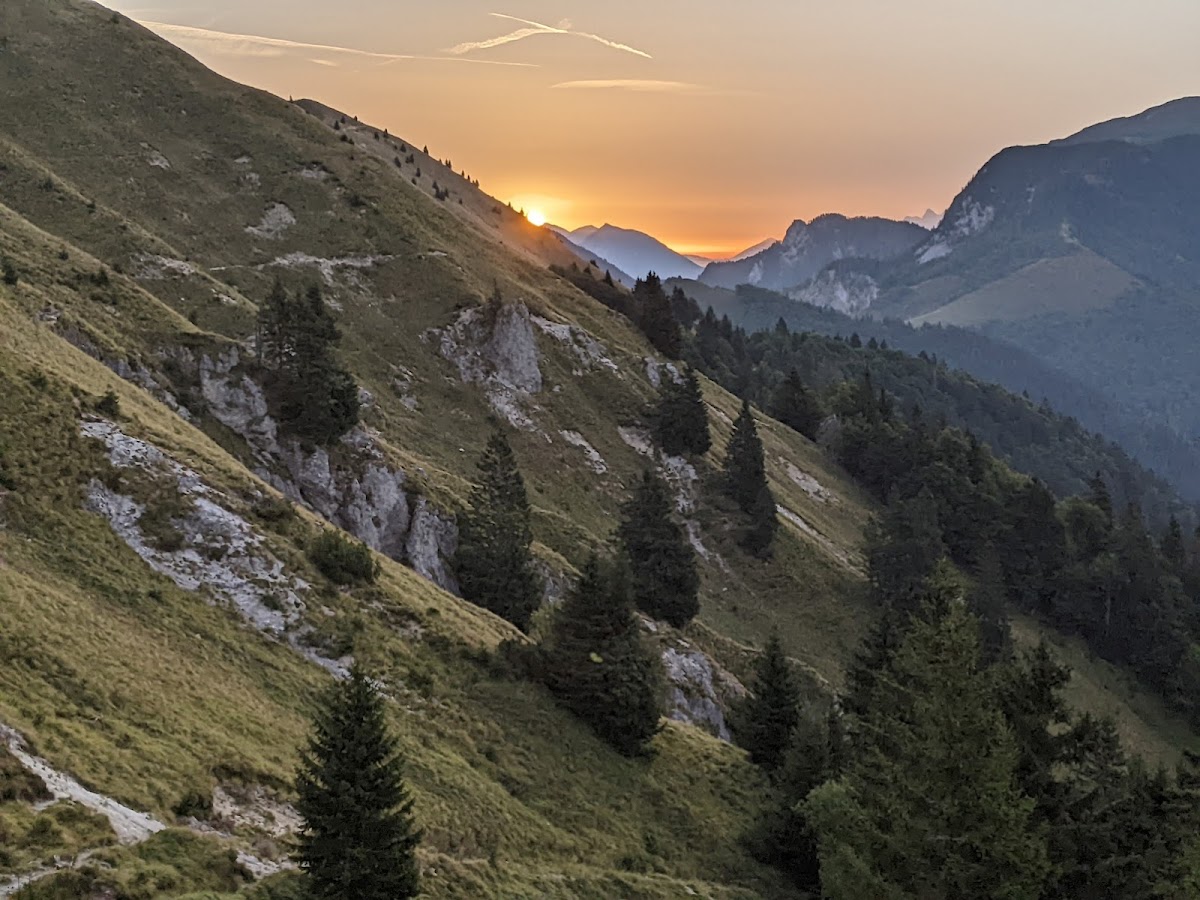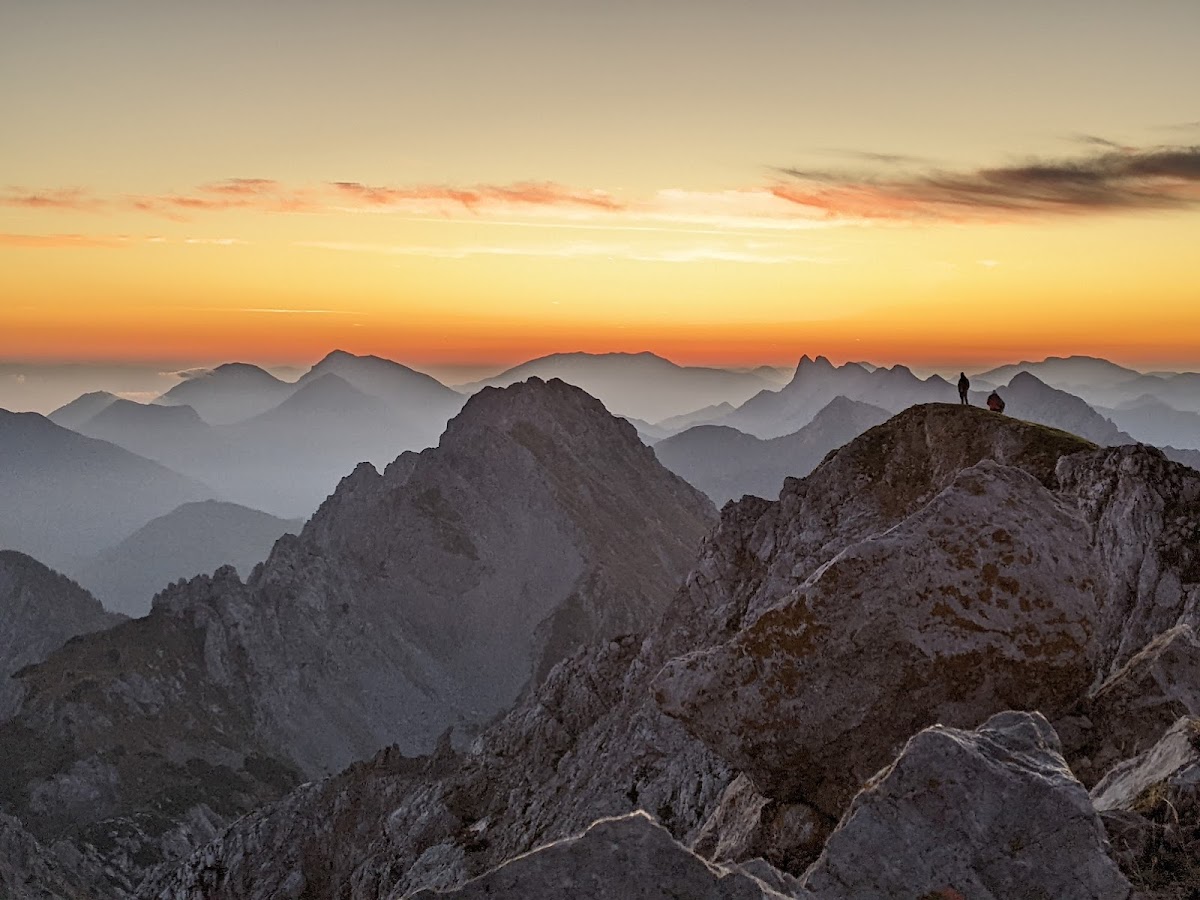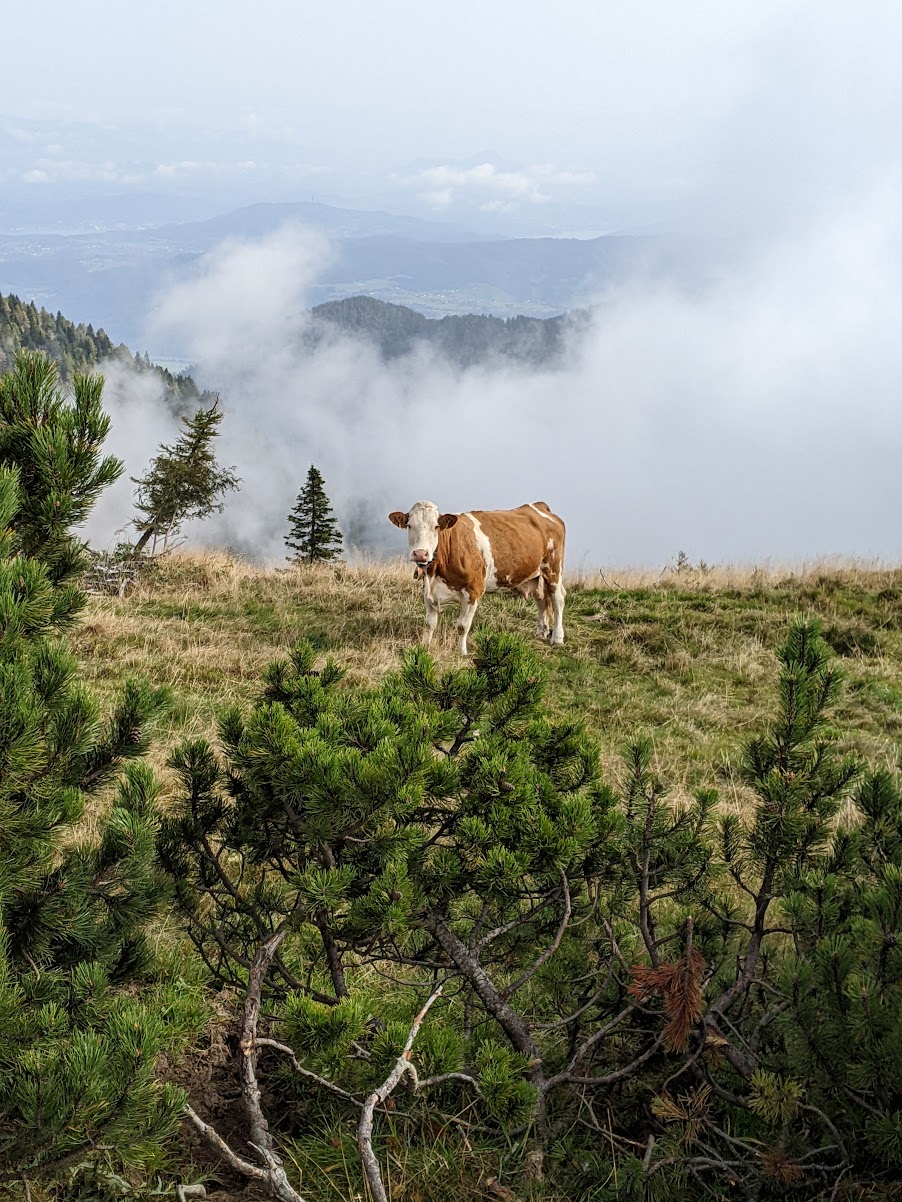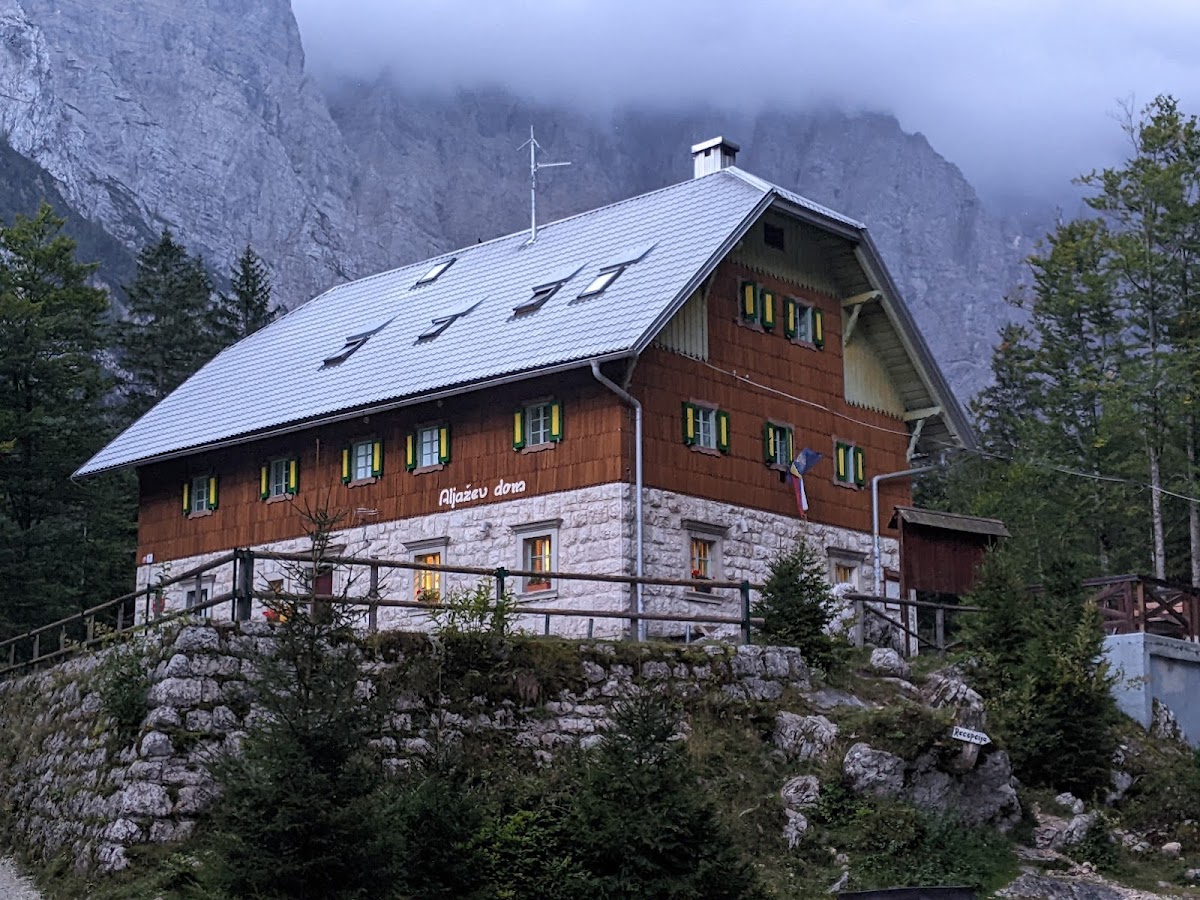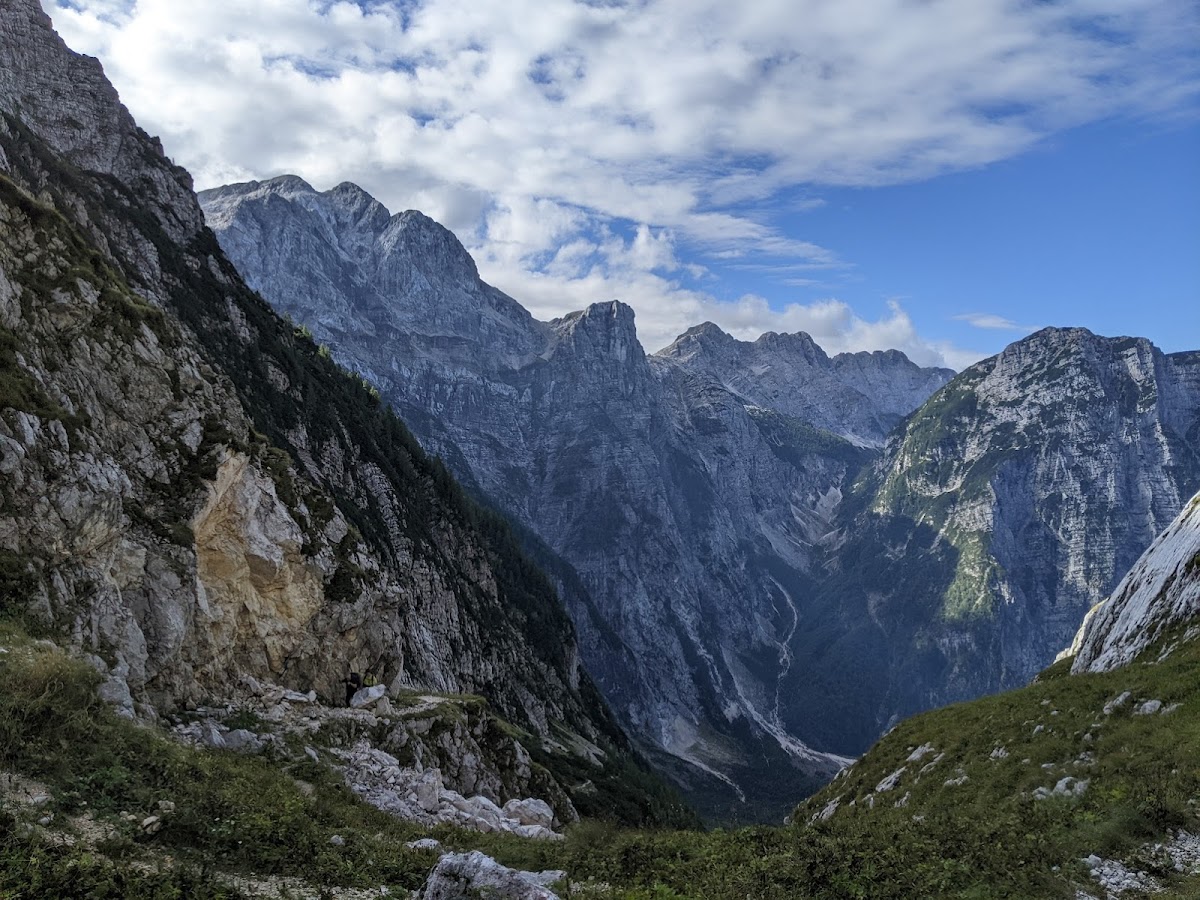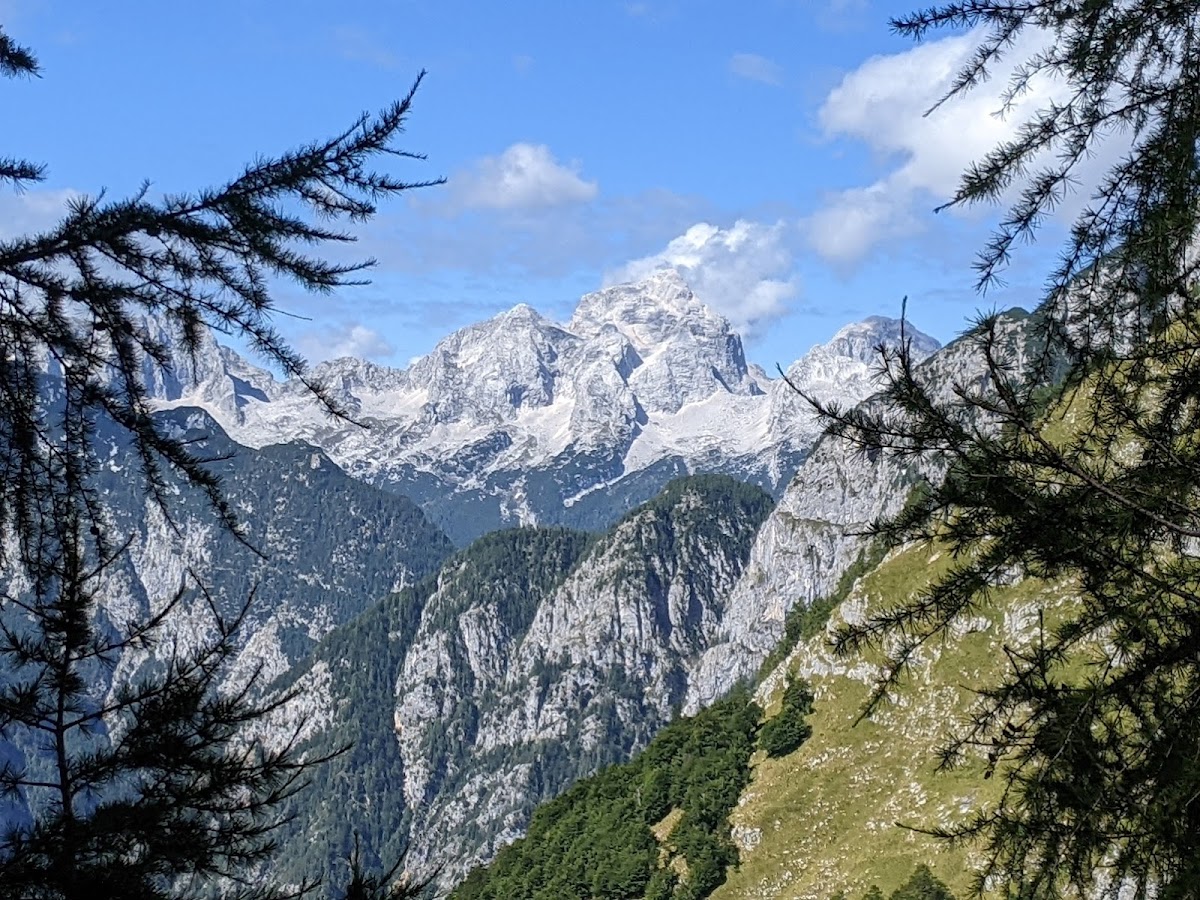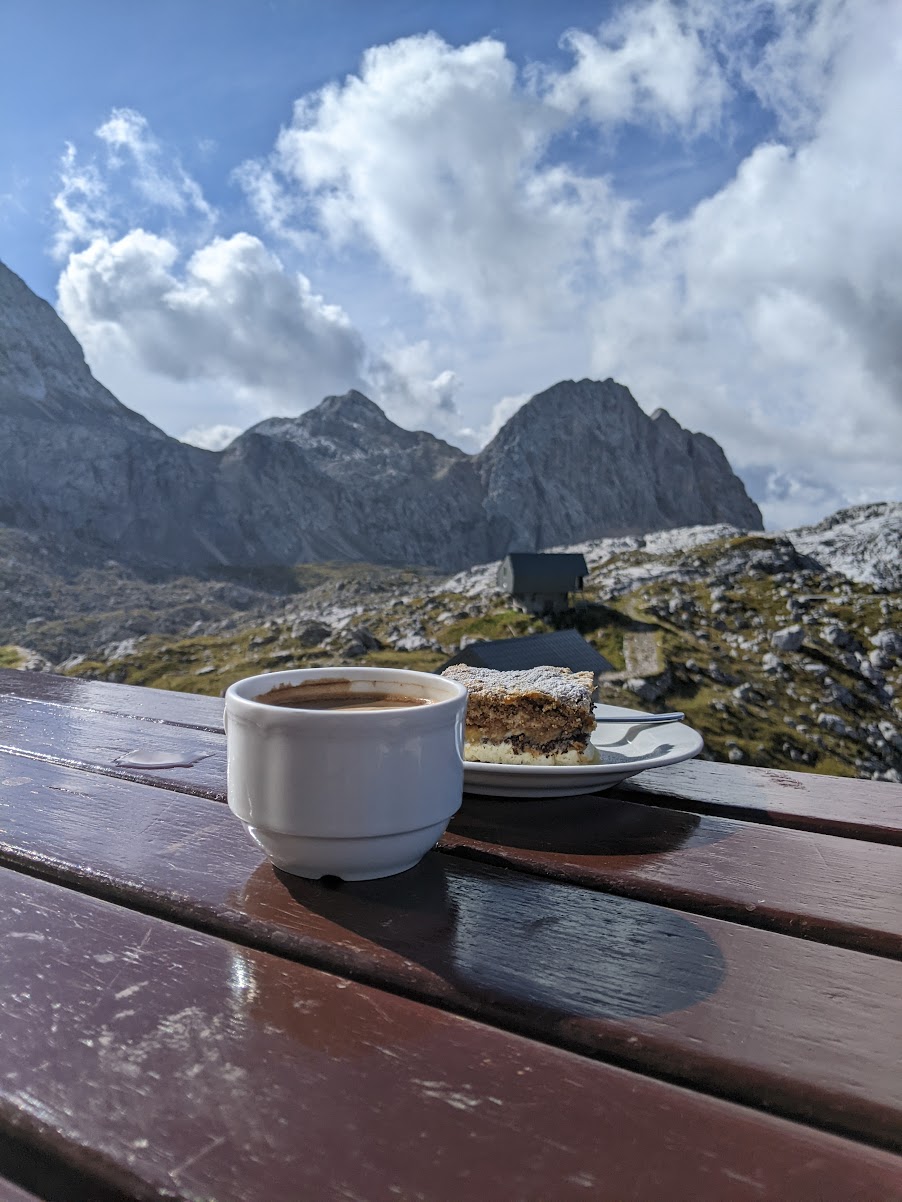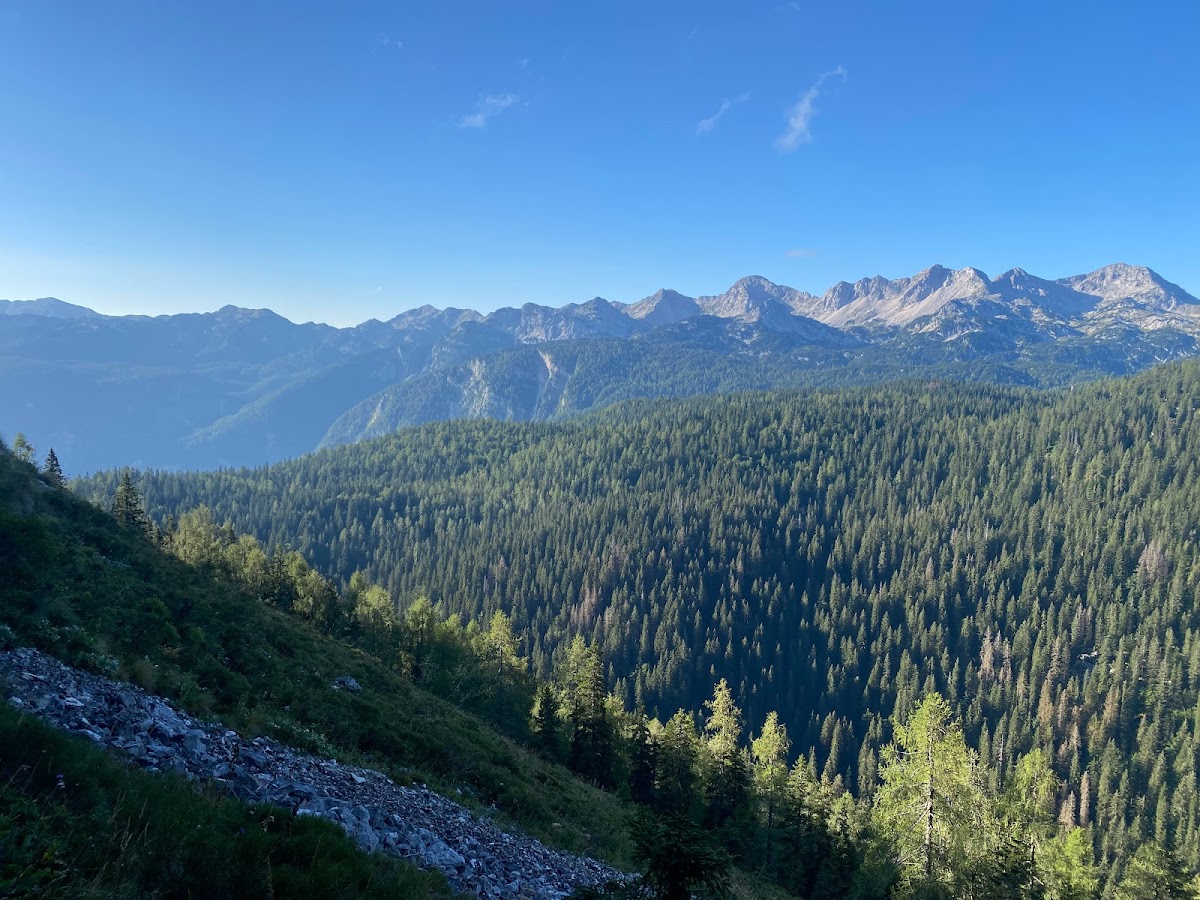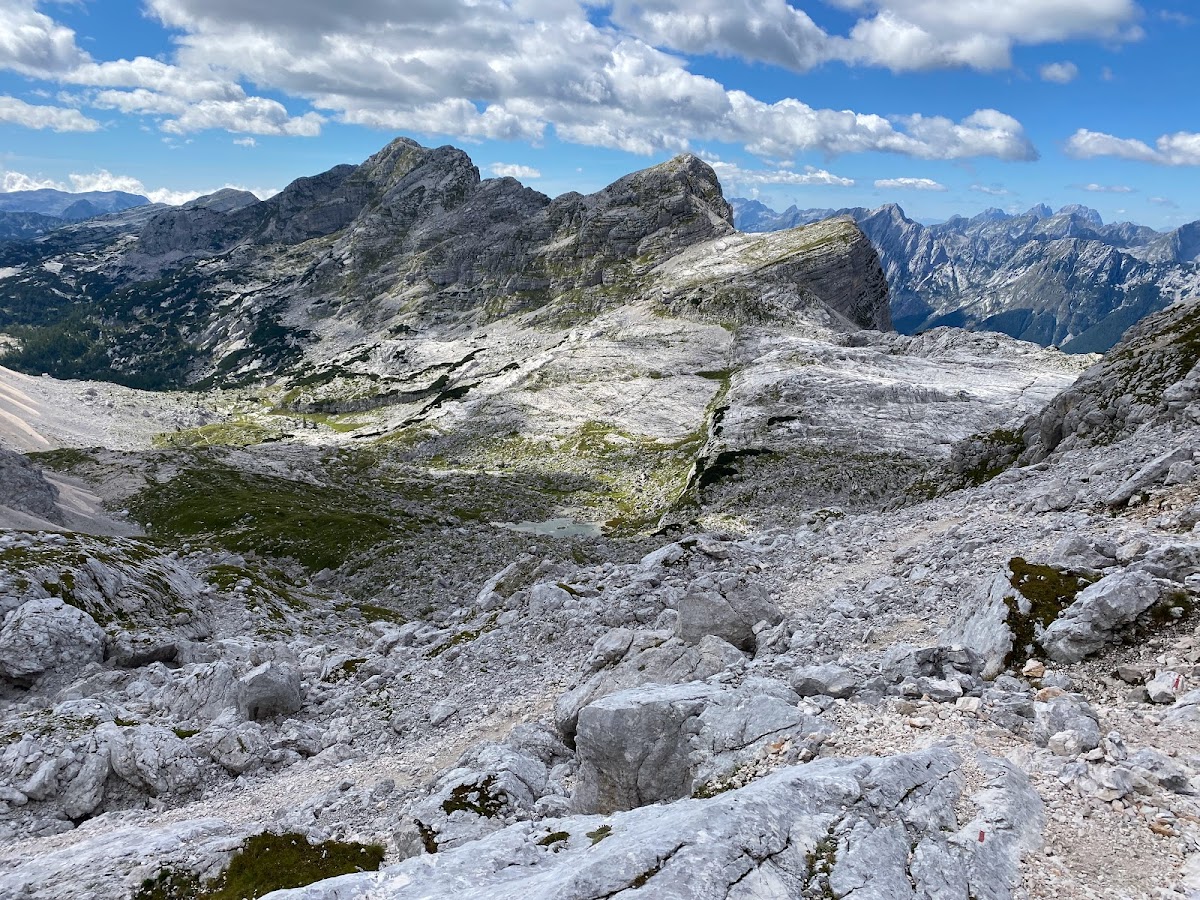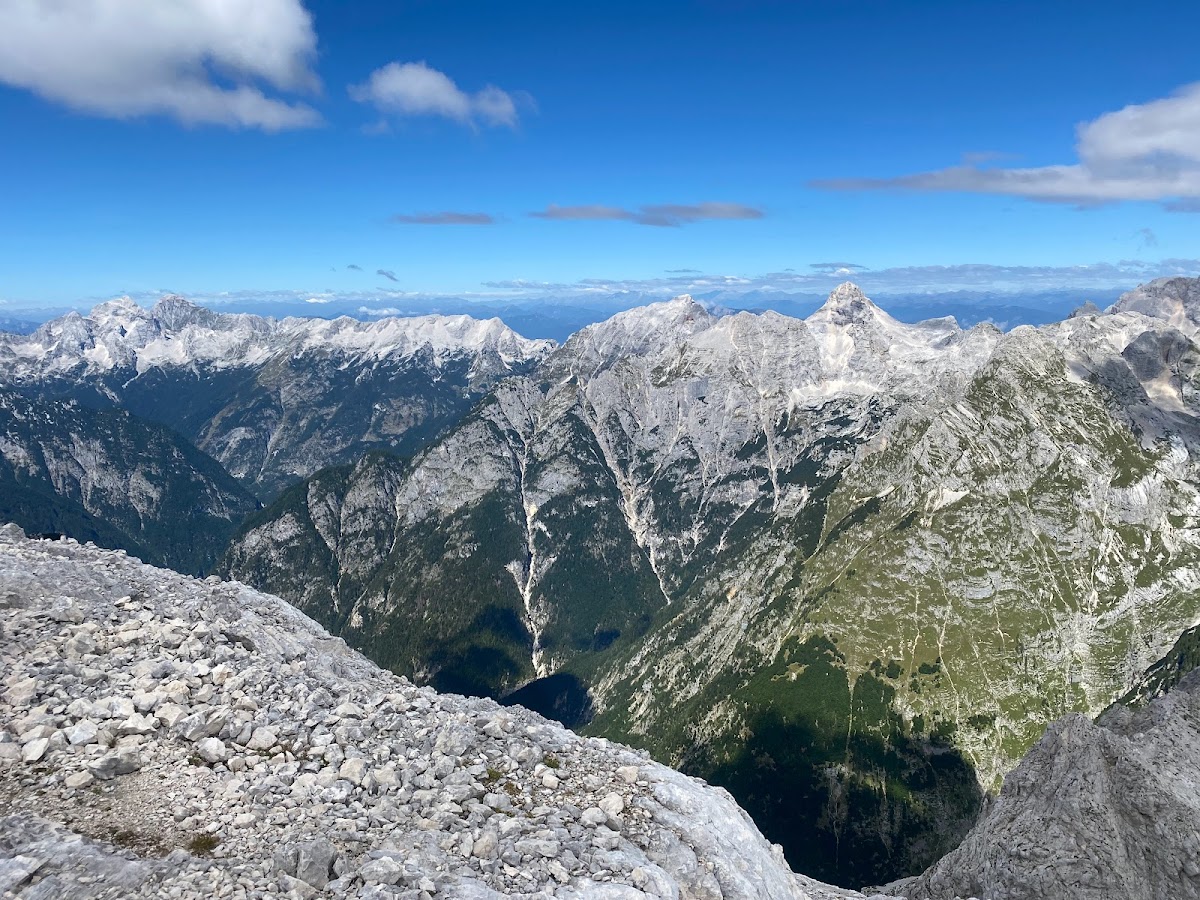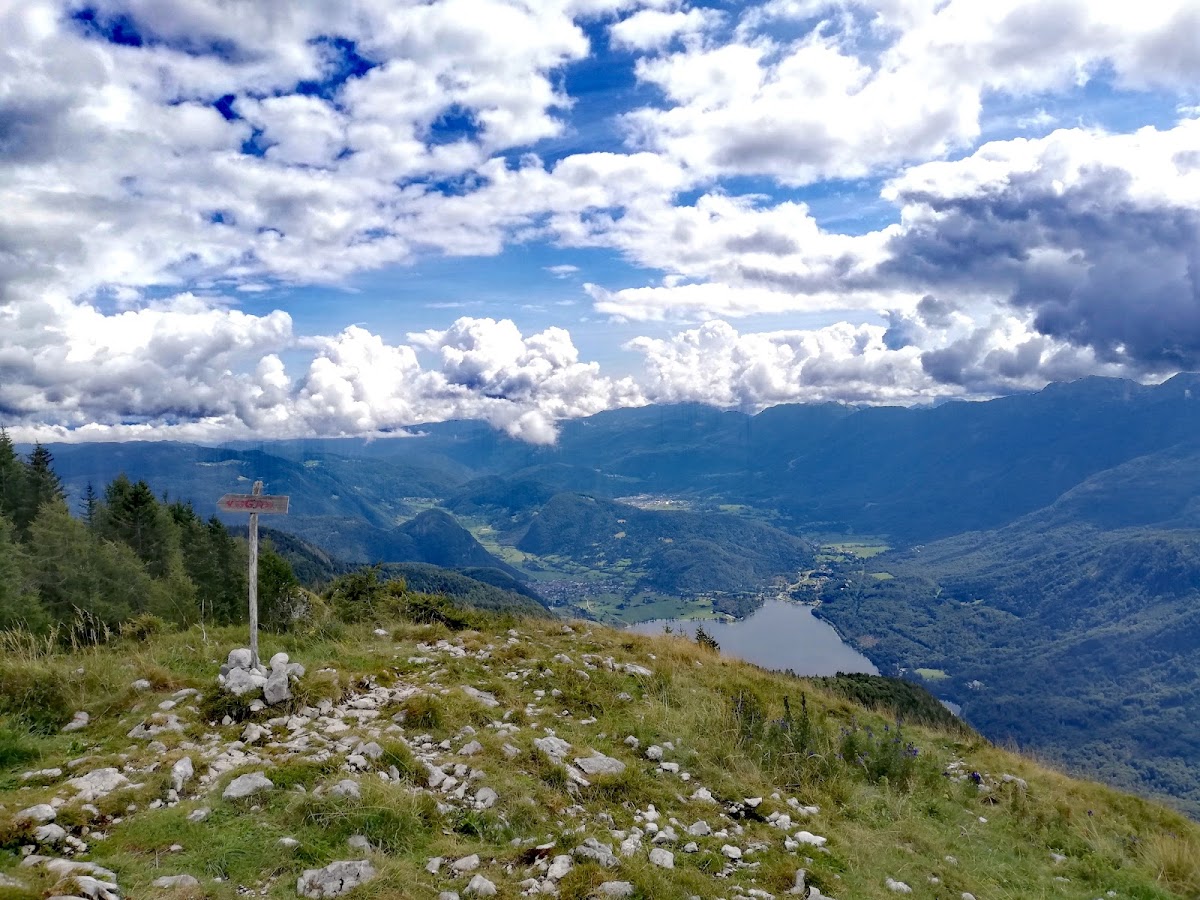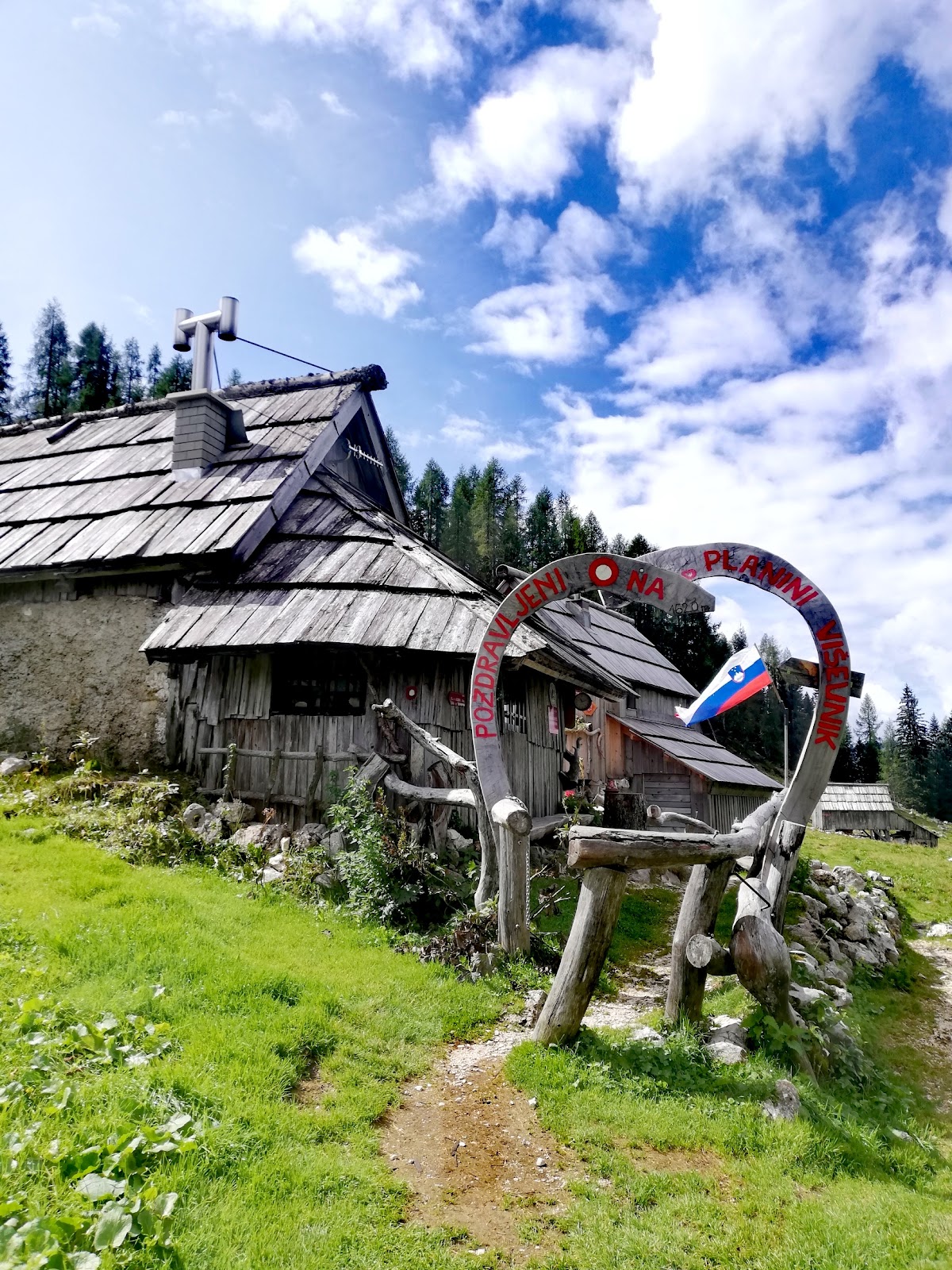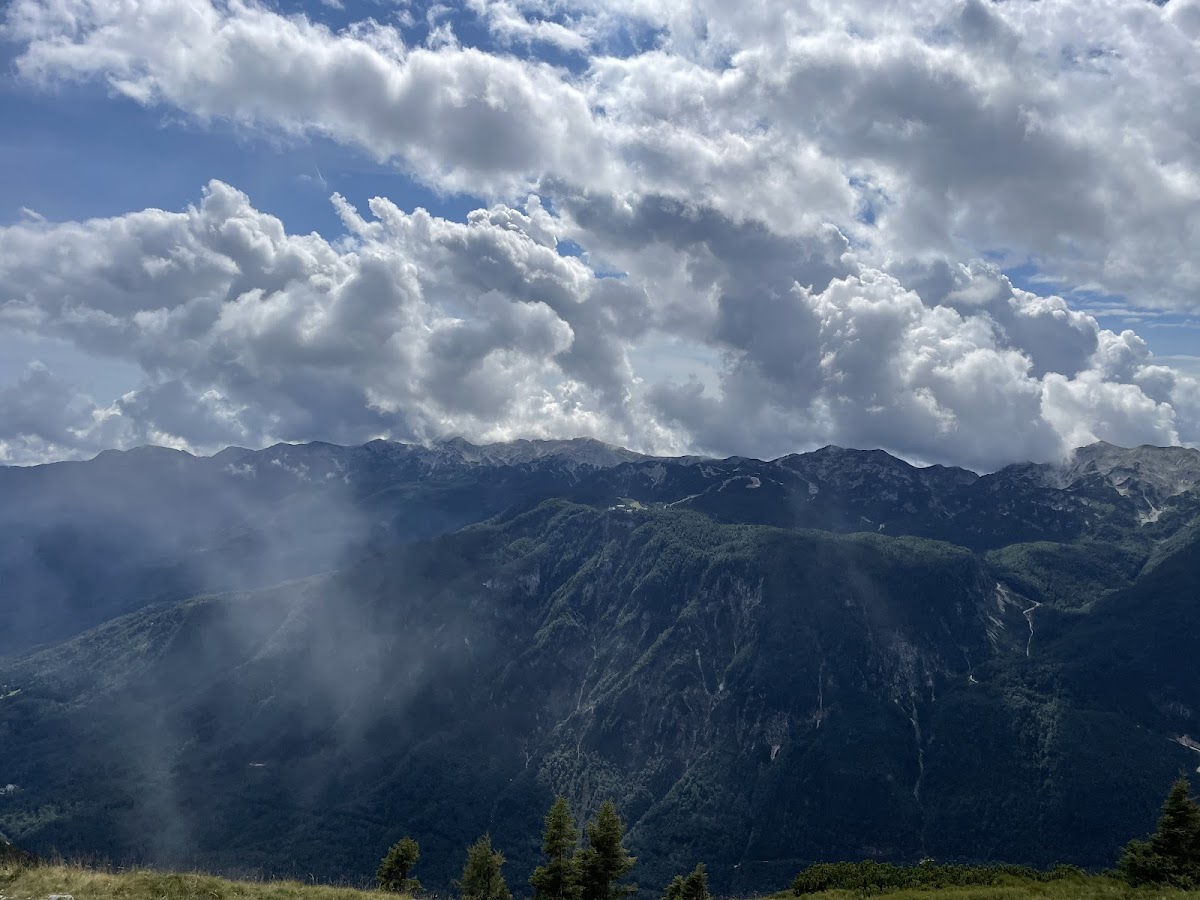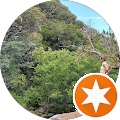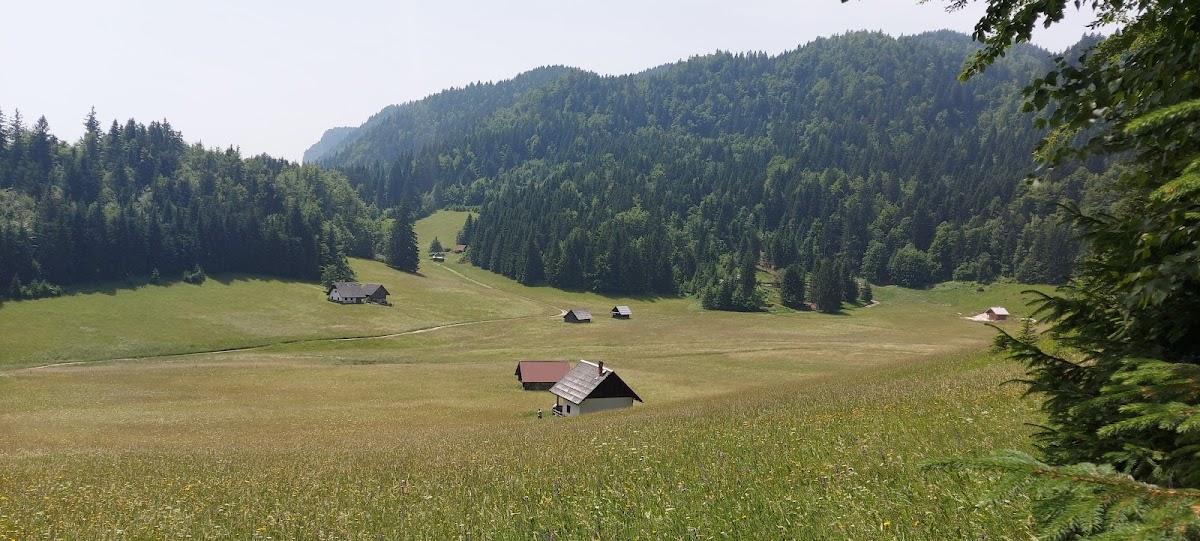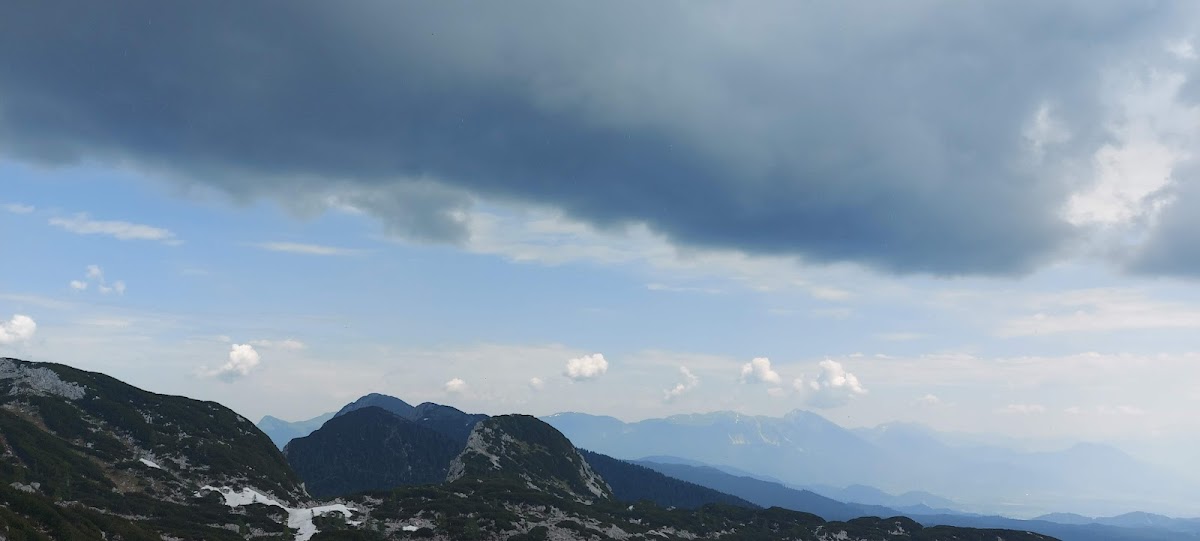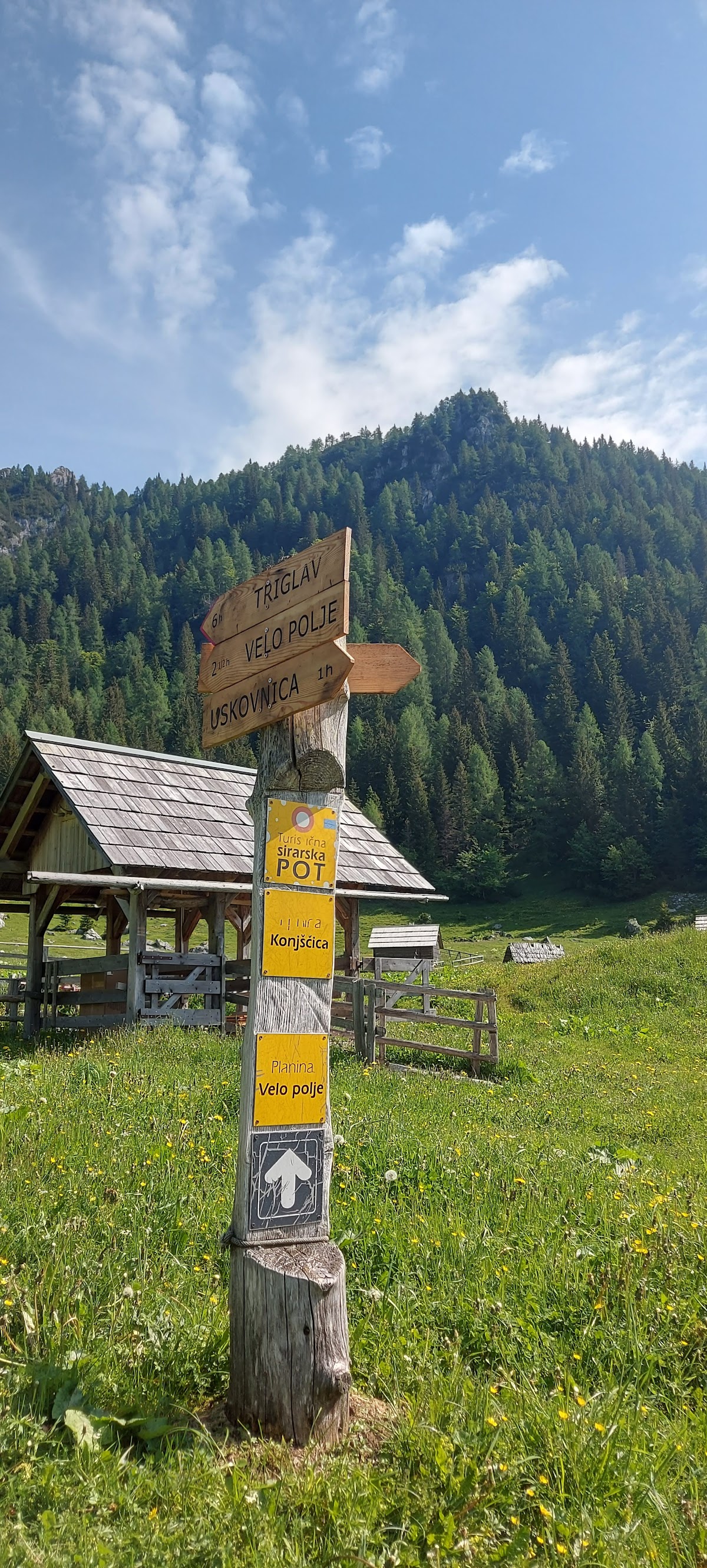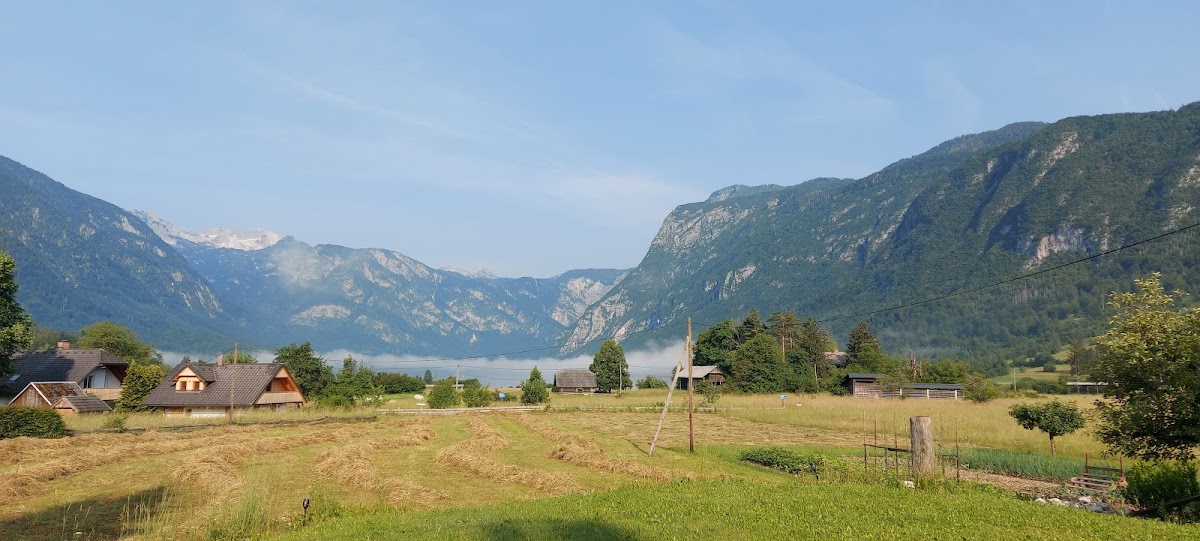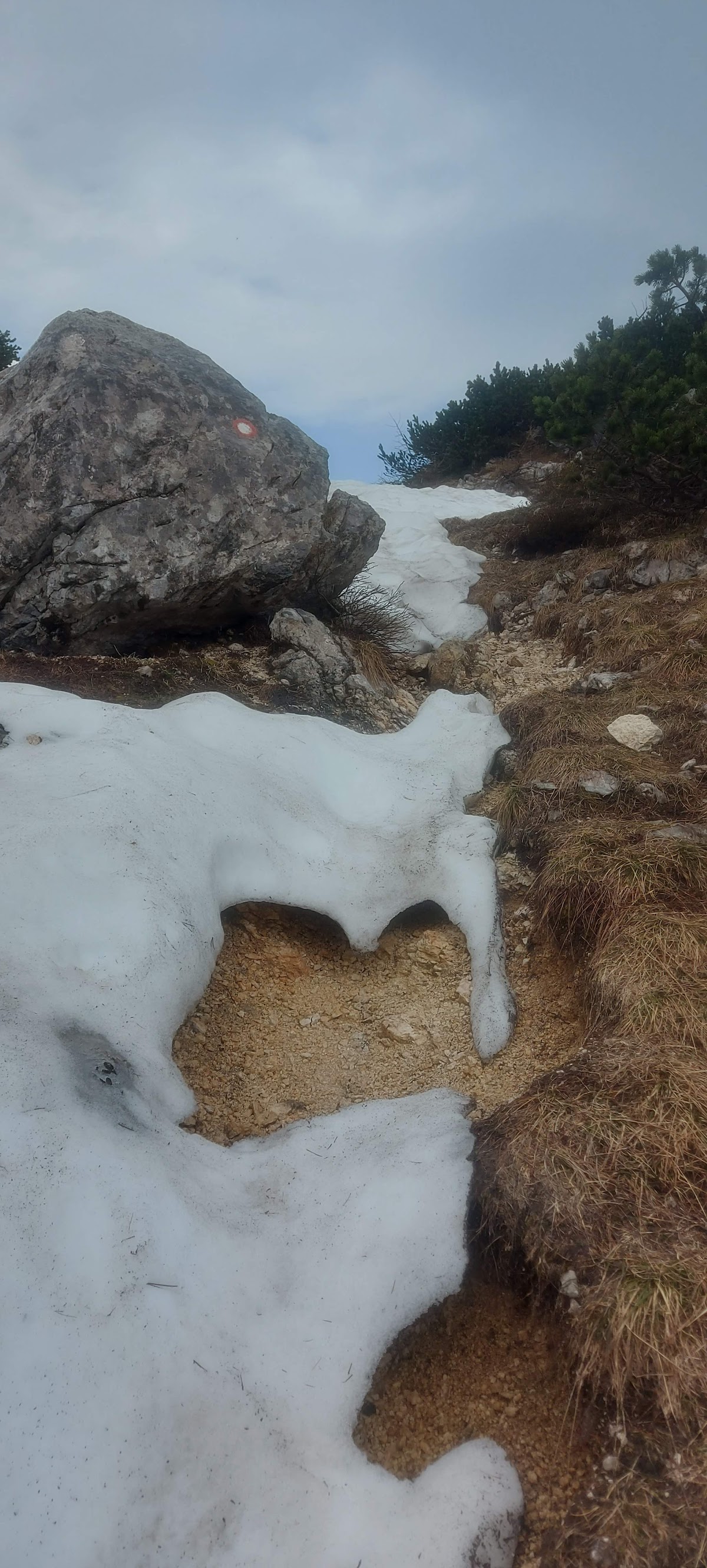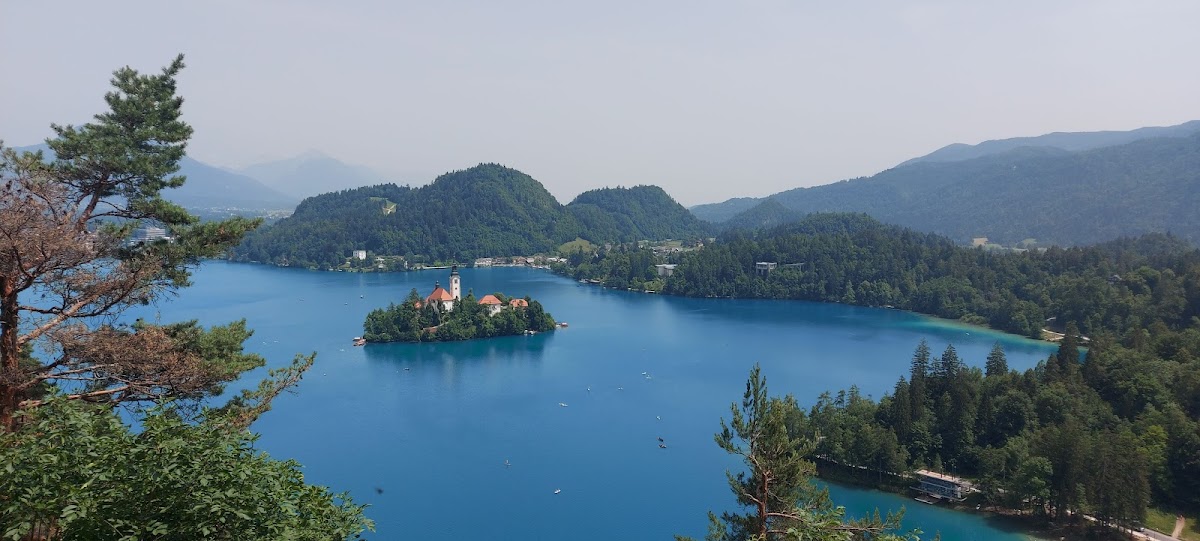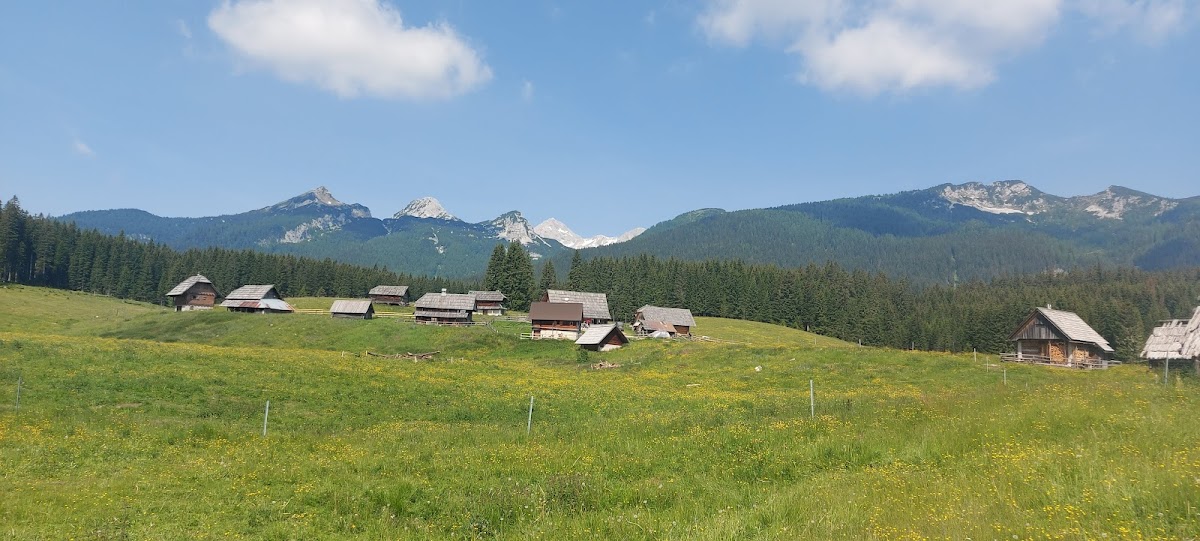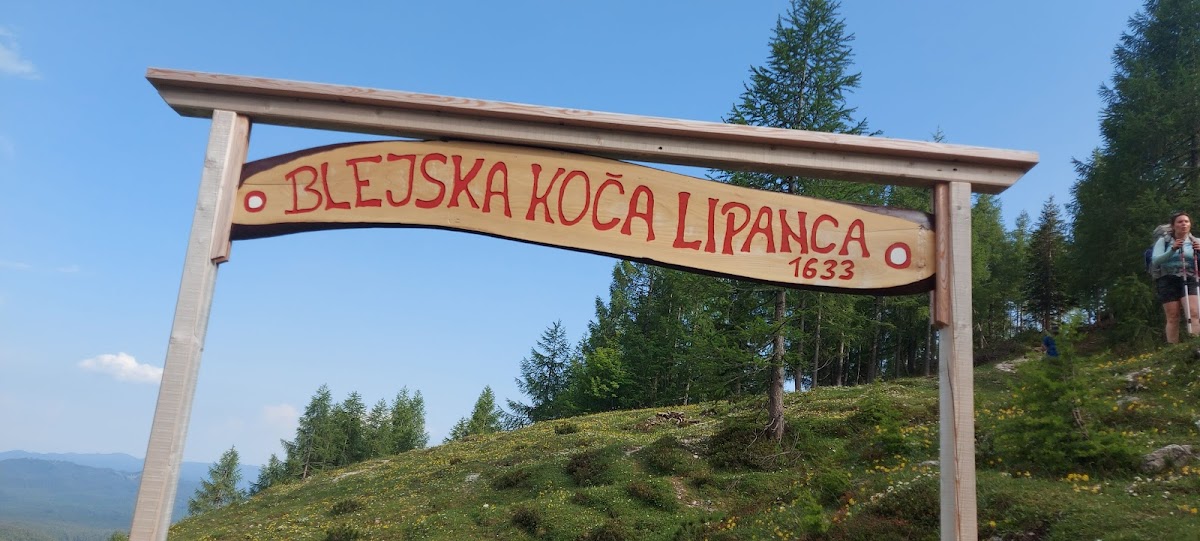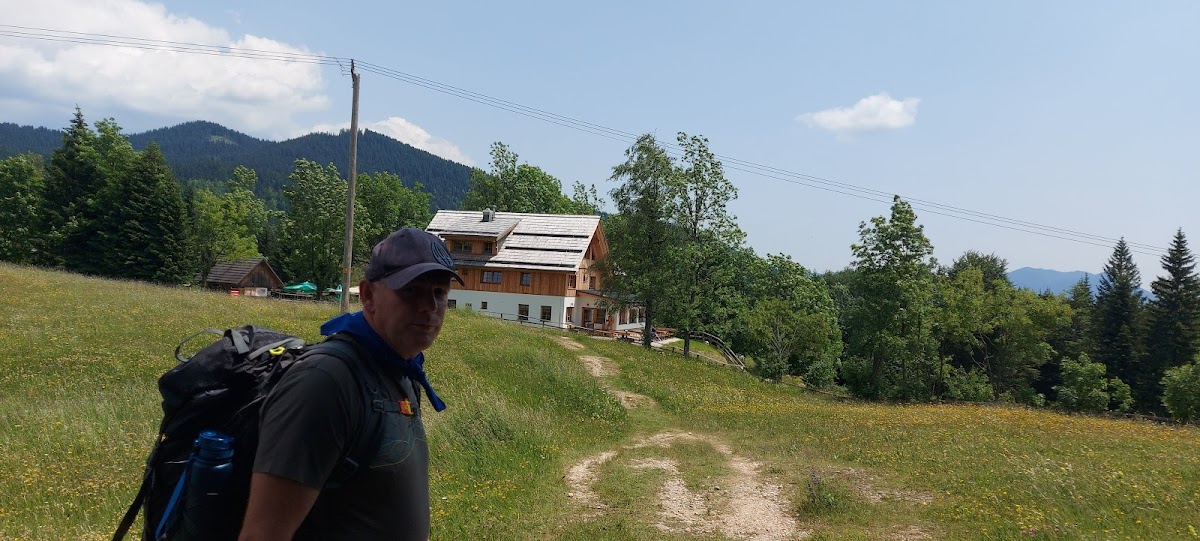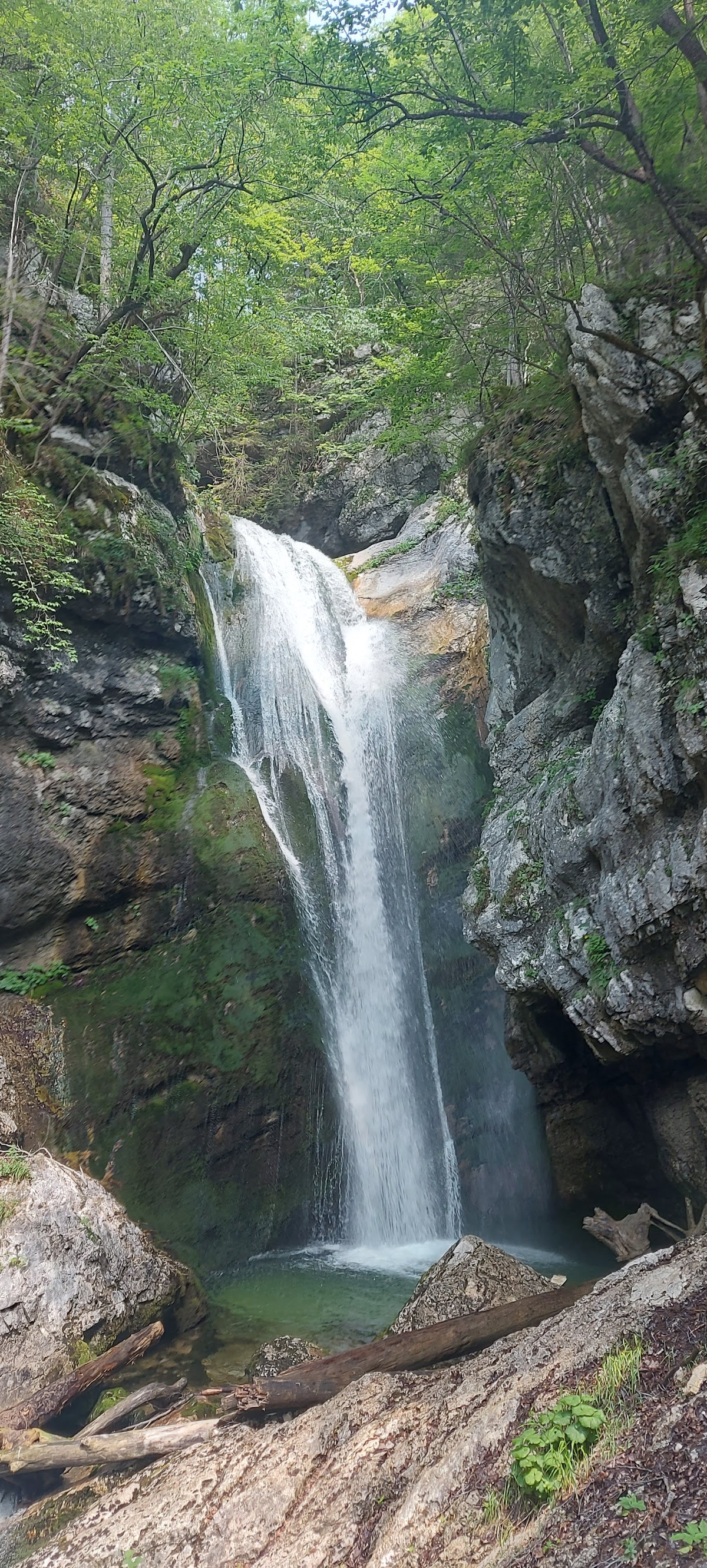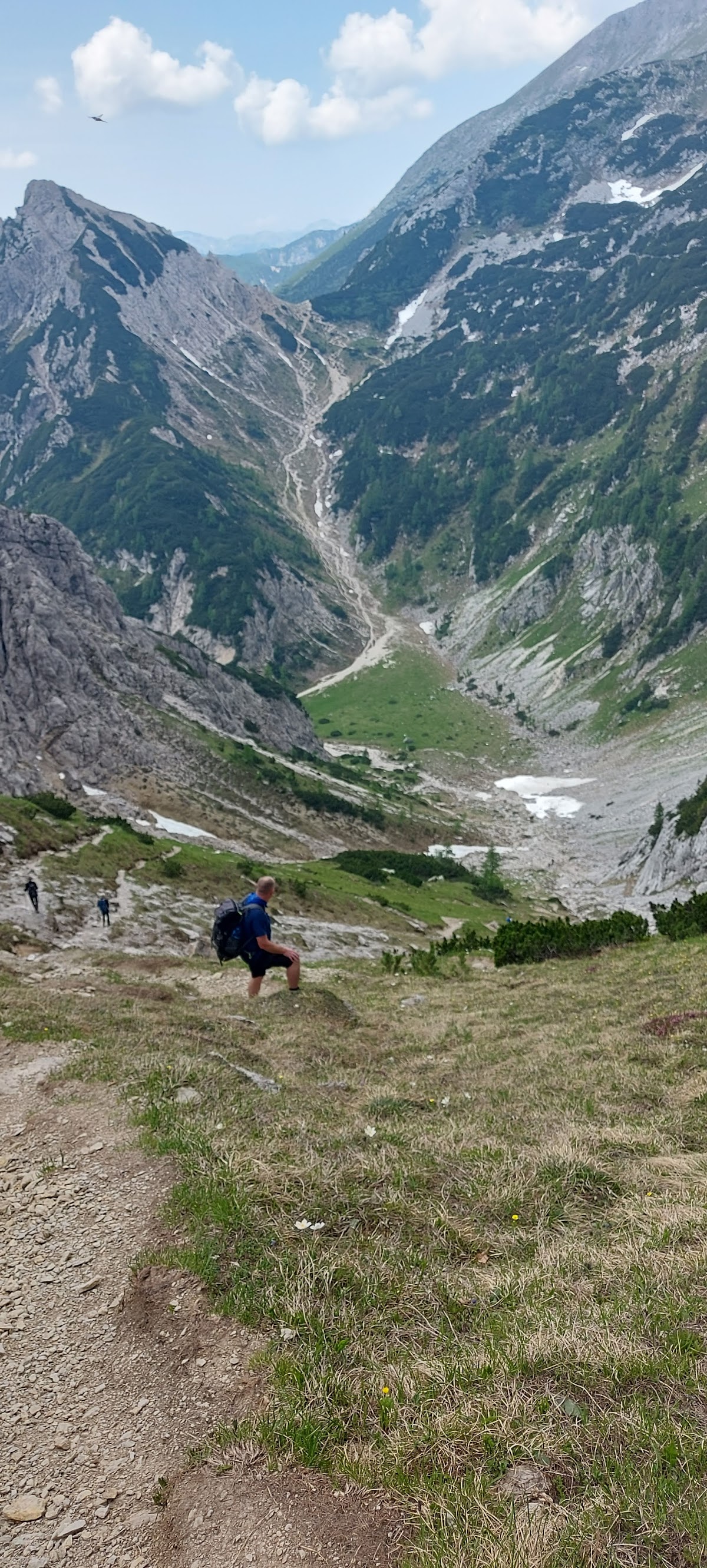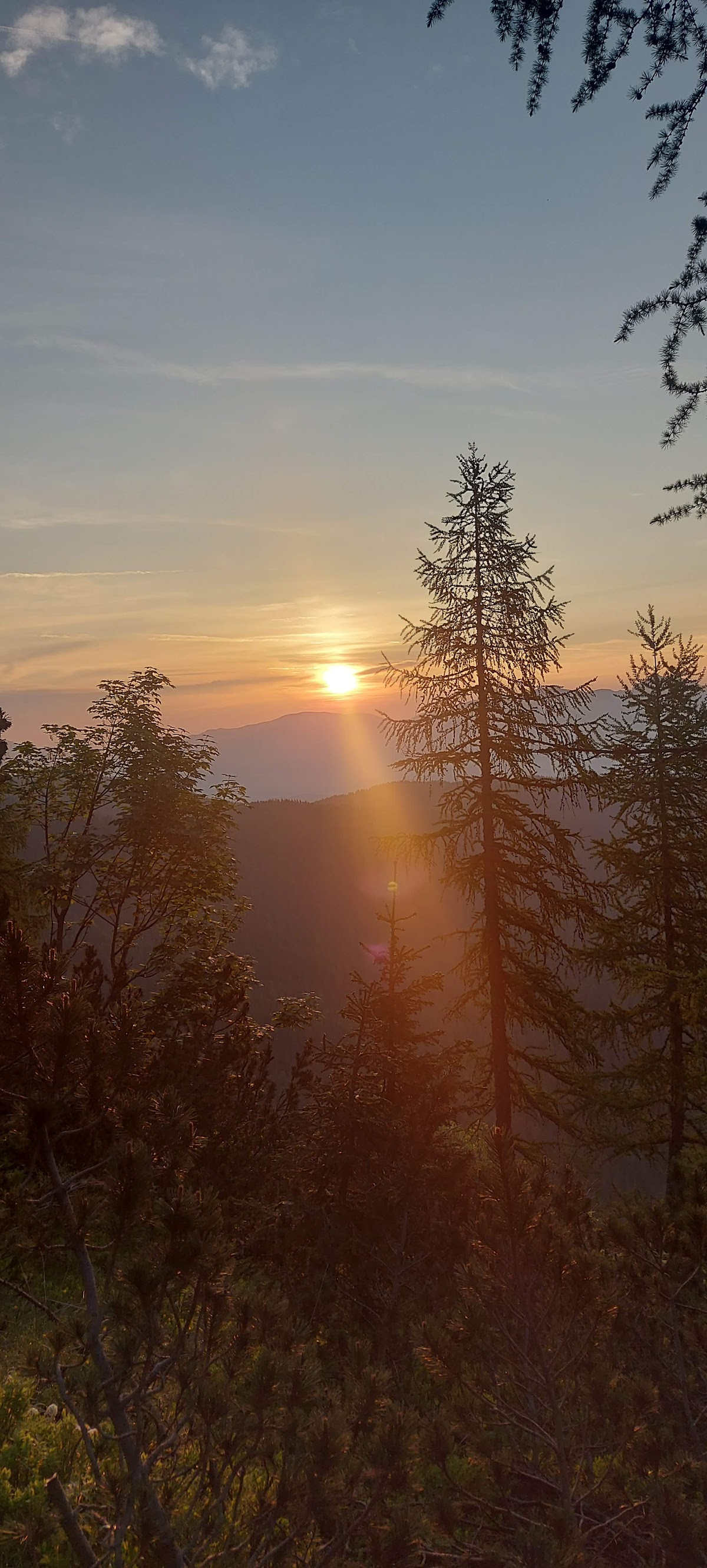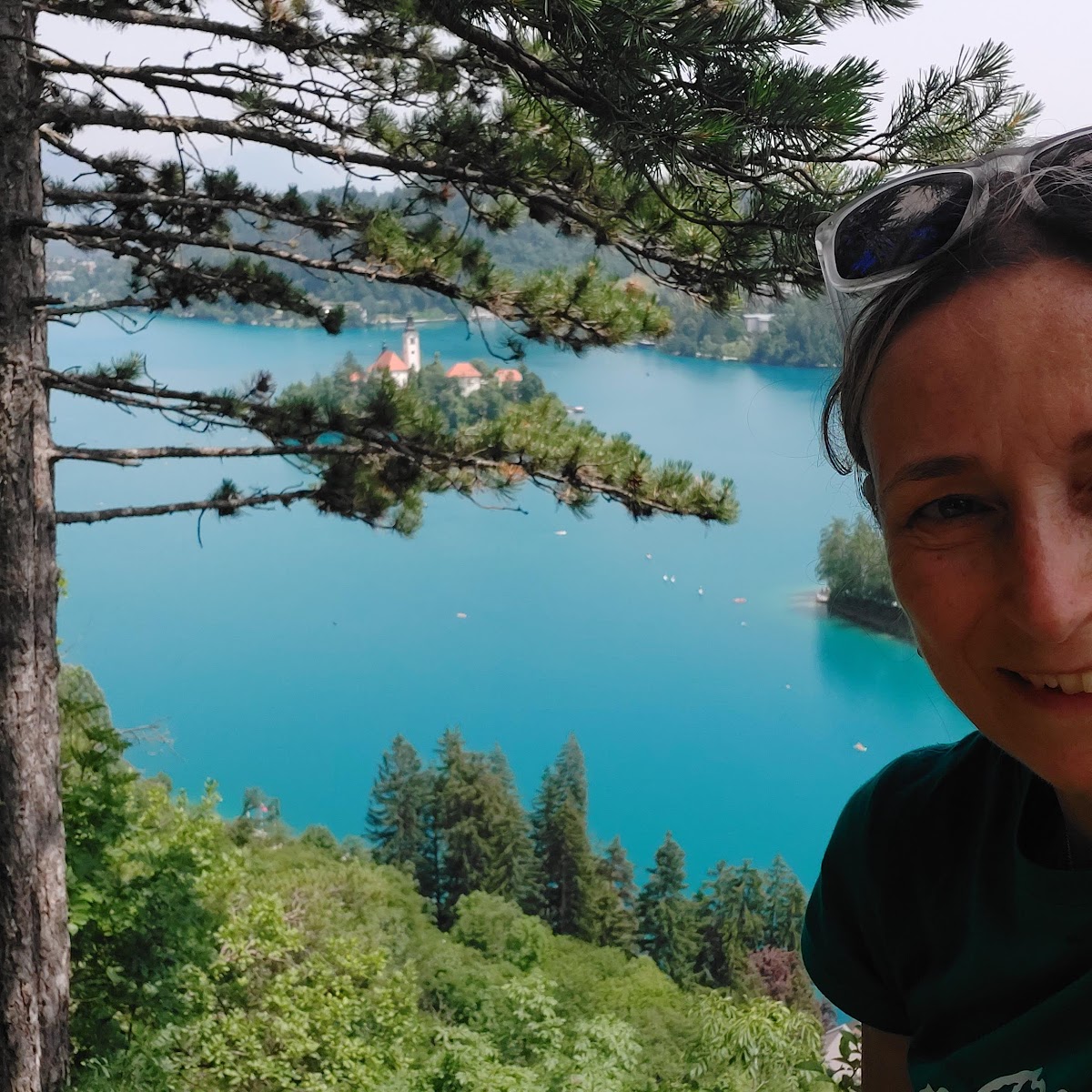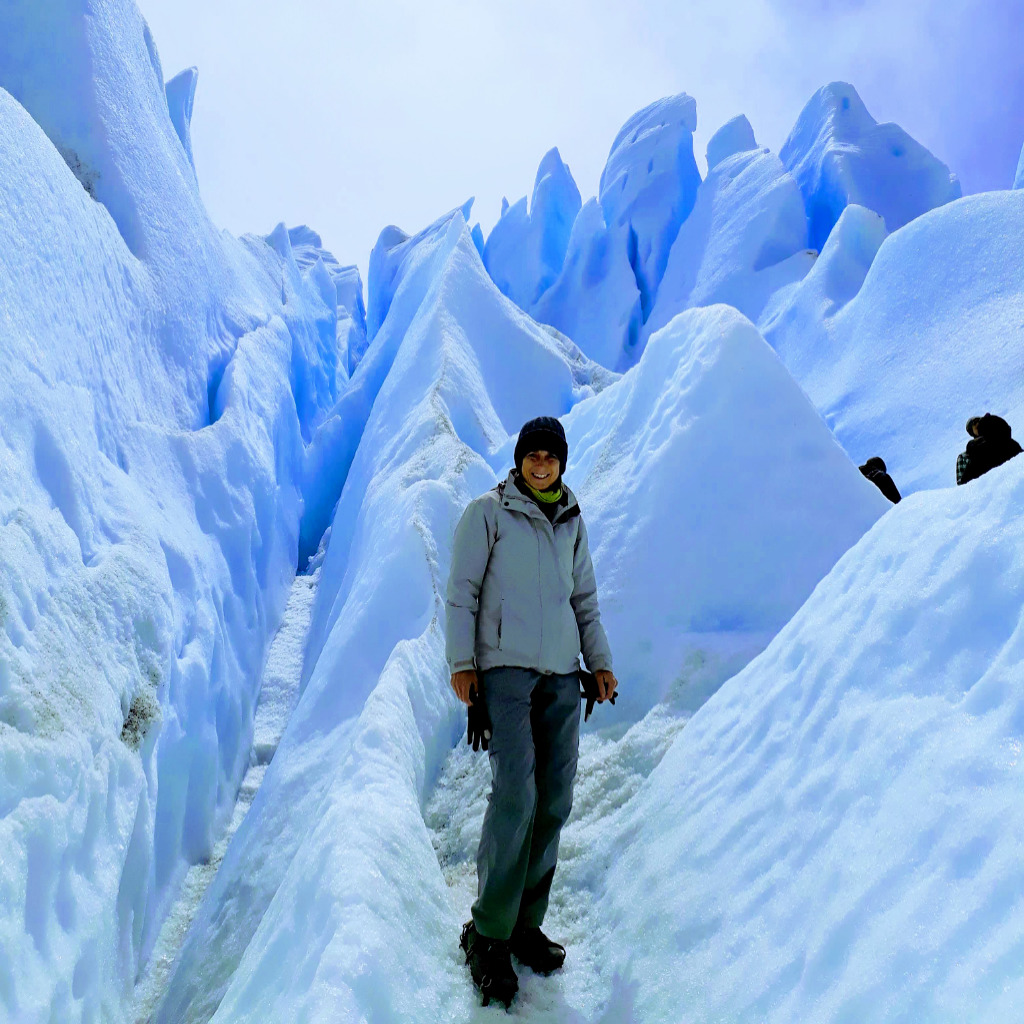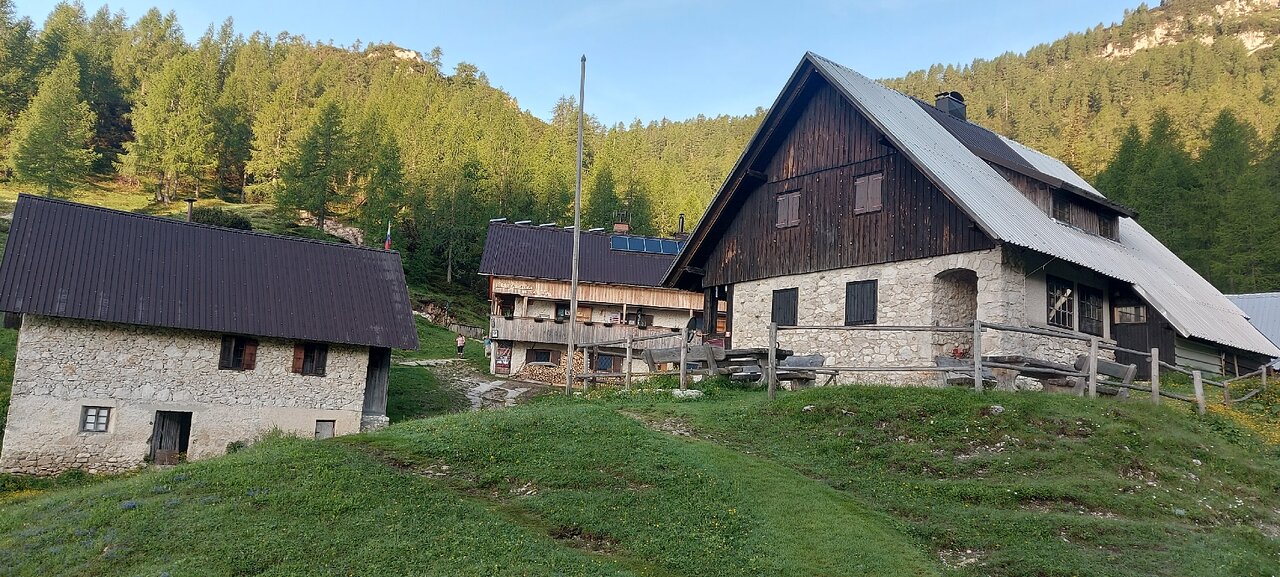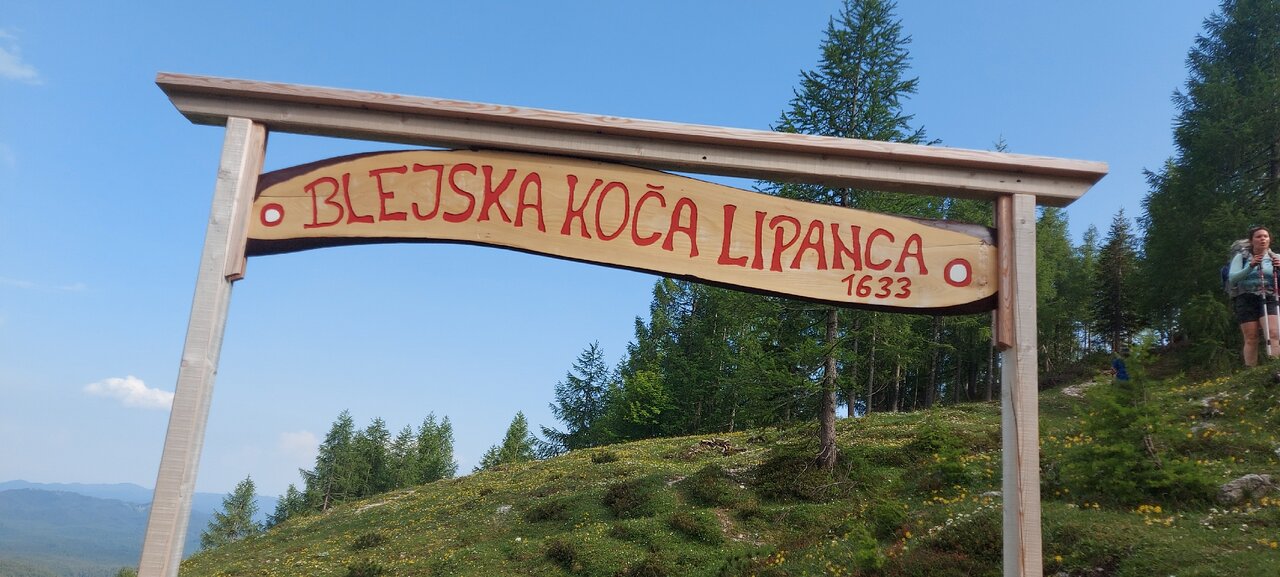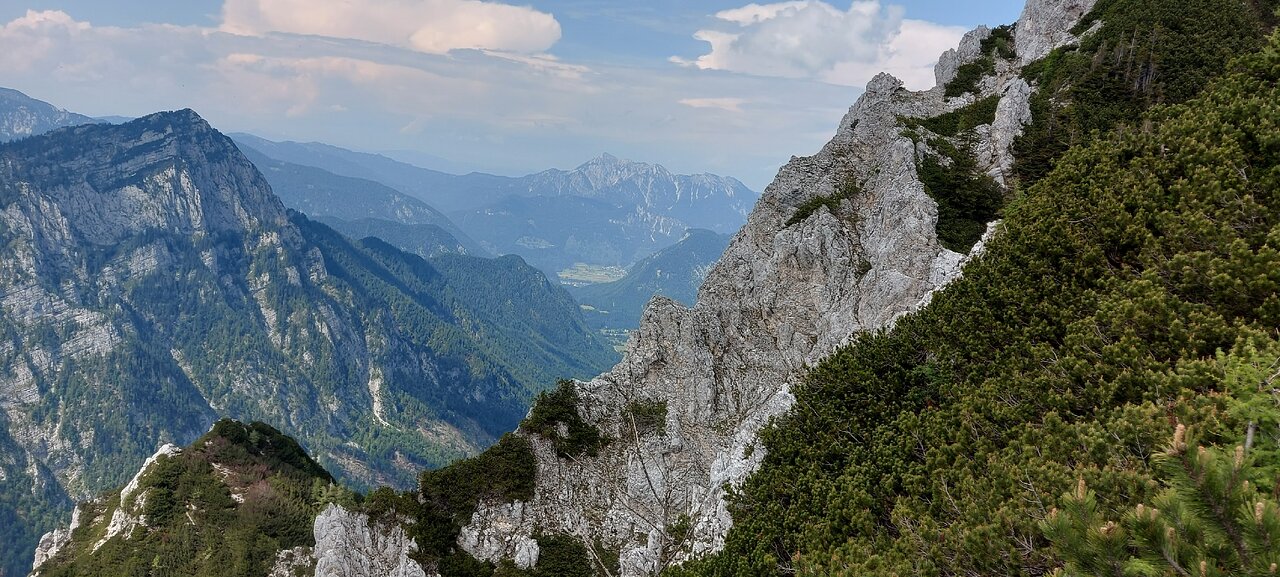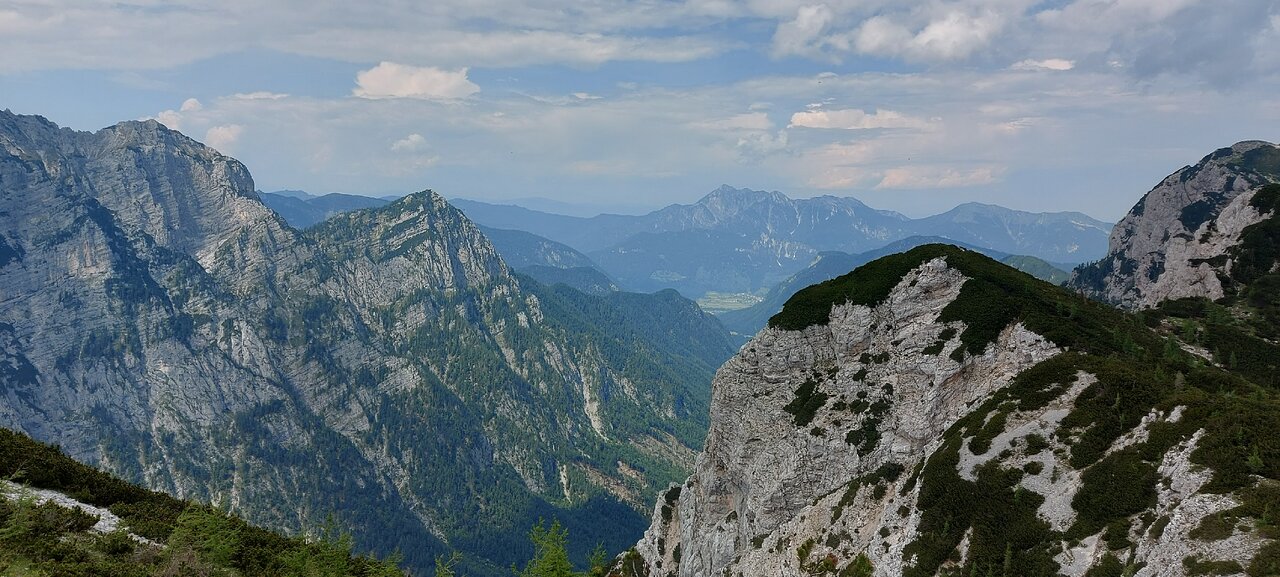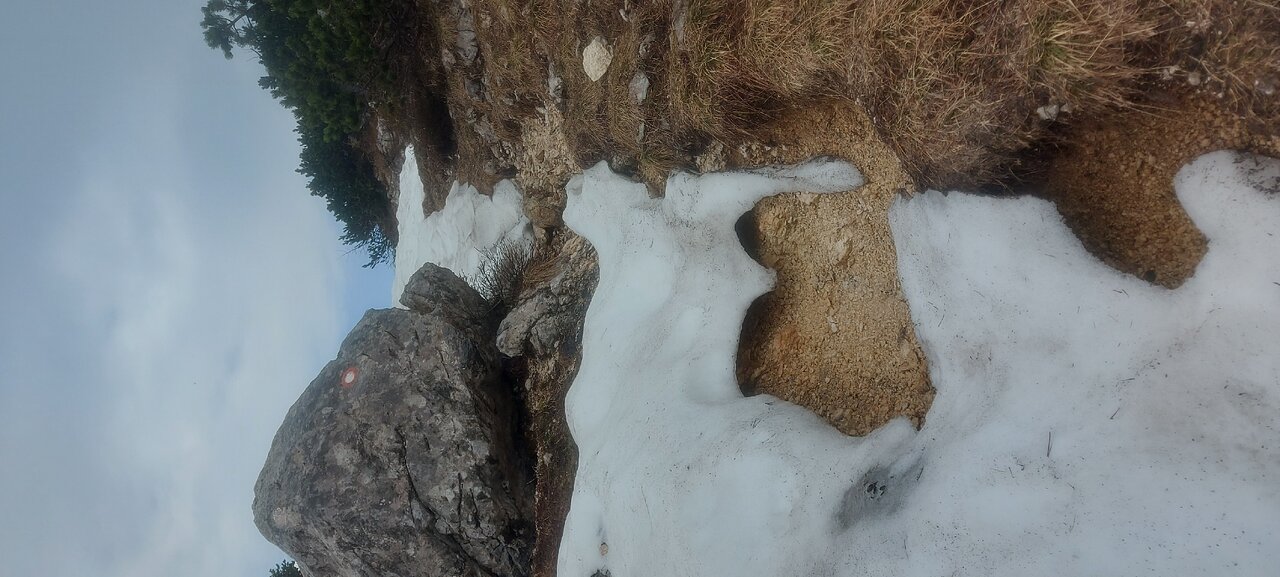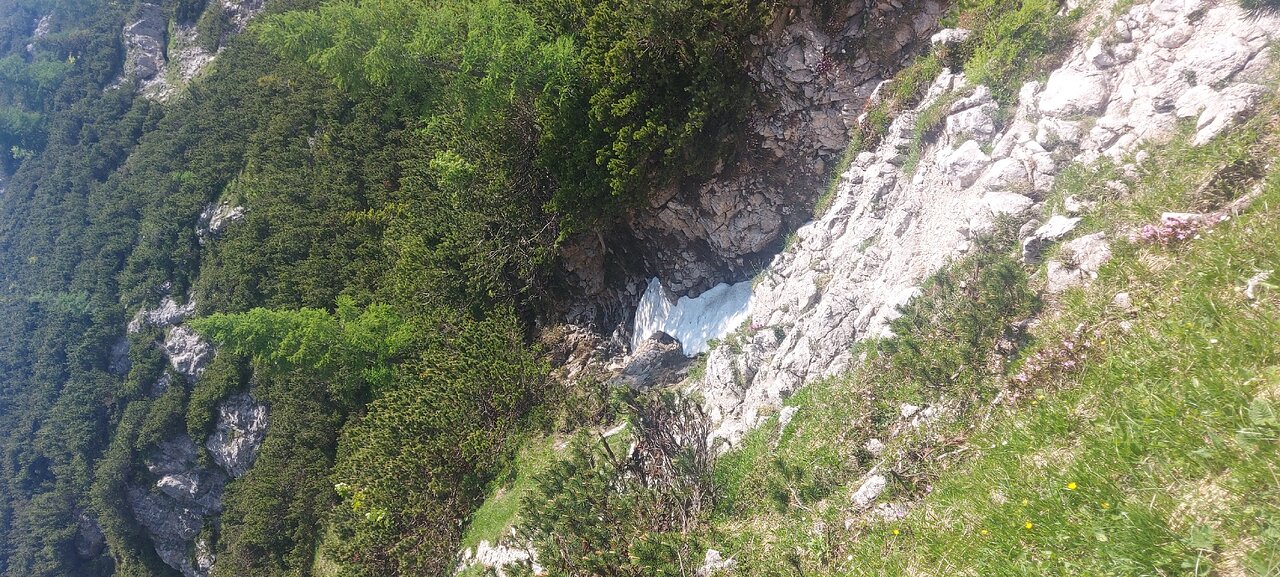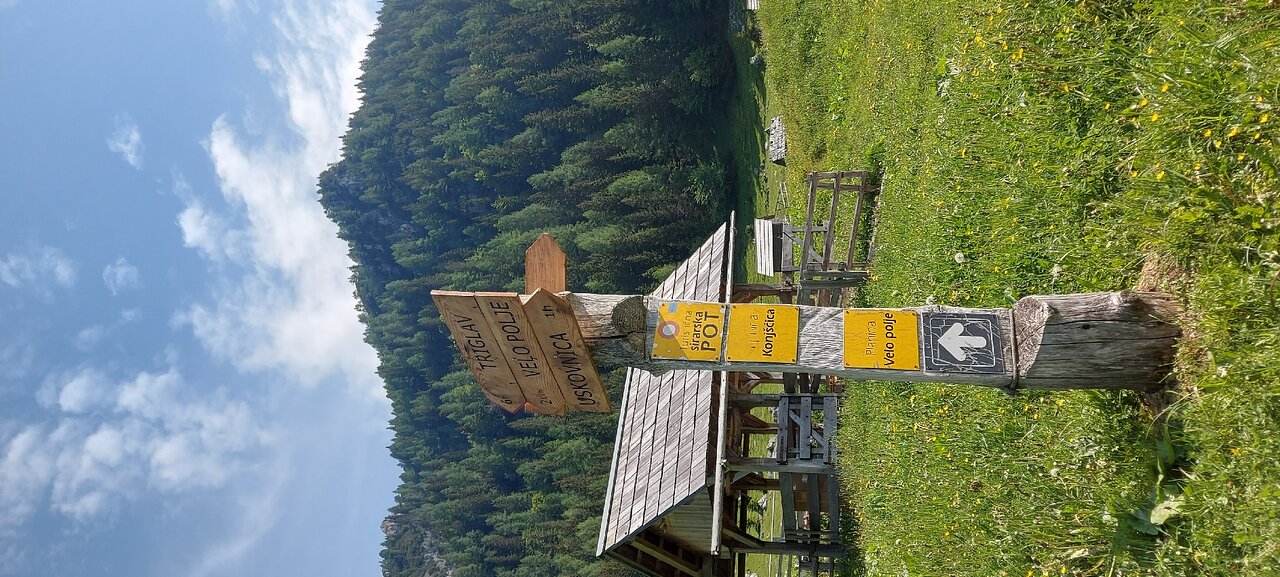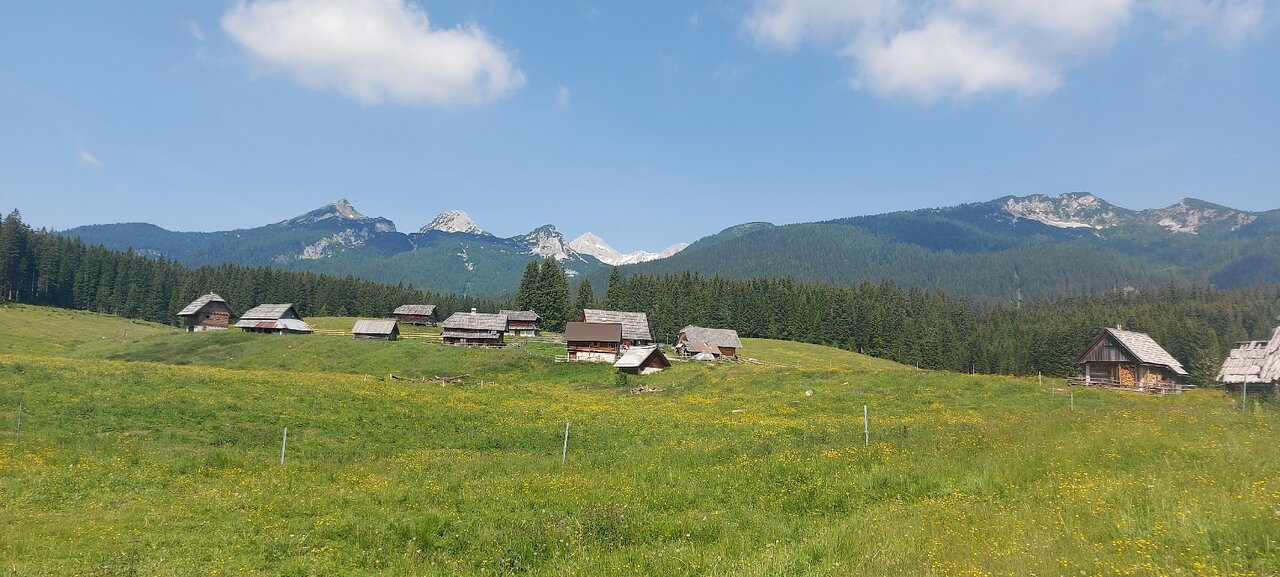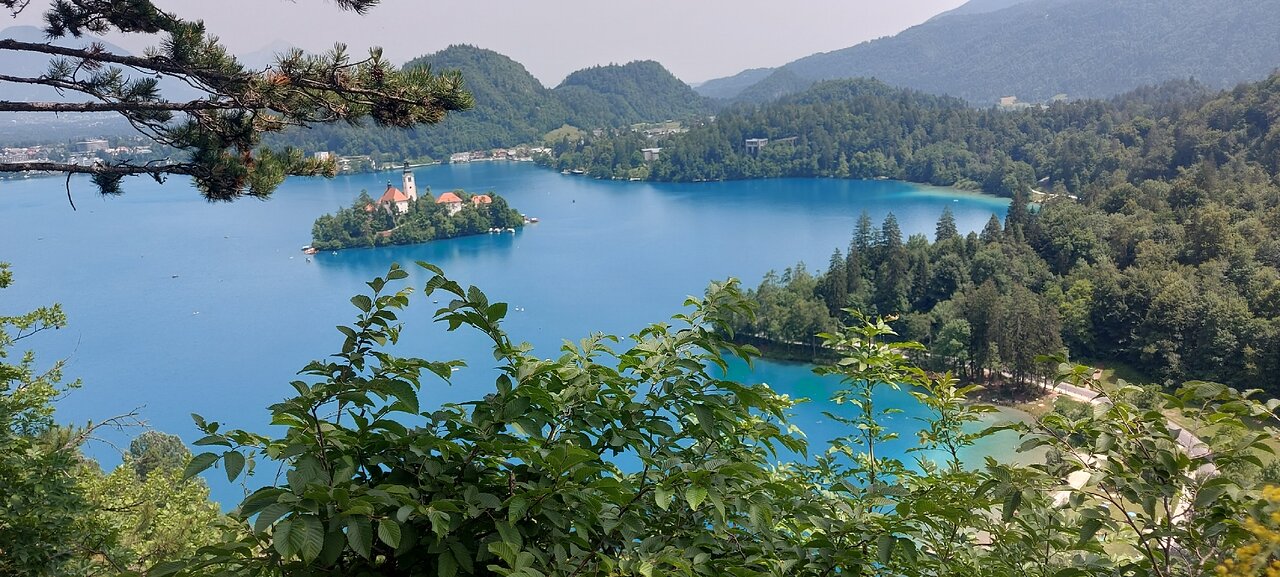Even though Slovenia only has one national park, one day isn’t enough to see all of its beauty. Each voyage into this territory is a day full of childlike wonder, as there is always something new and unexpected to see. Even locals haven’t seen half of it.
First the collision of tectonic plates, then the sculpturing by water; All this made the mountainous landscape of the Triglav National Park, as it is today. Full of grey limestone mountain groups, sharp ridges, high-altitude karst plateaus, U-shaped glacial valleys, deep ravines, crystal clear streams, majestic waterfalls and more.
All of the above can be seen from afar, but it gets even more diverse if you look closer. The Park is full of various ecosystems. Forests, peat bogs, streams and rivers are the most reachable, as they are more prevalent at lower altitudes. Going higher into “the kingdom of the Goldhorn”, the alpine lakes are surrounded by high-altitude meadows, and rock cliffs tower over scree fields.
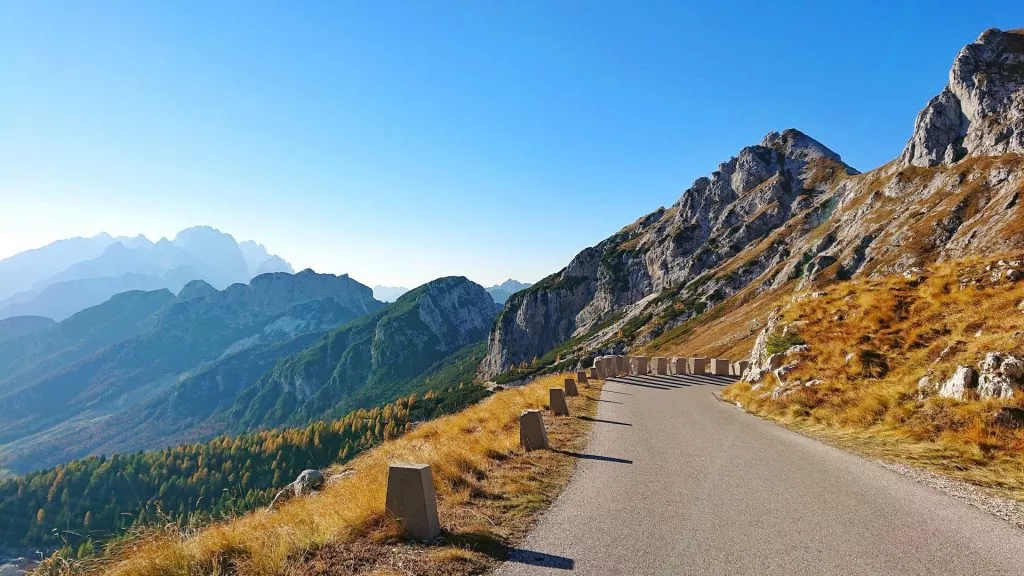
It is a paradise for nature lovers, but don’t worry, it is not absent from human activity. The area is also rich in cultural heritage. Especially on the outskirts of the Park, man has adapted to nature and became a part of it. From the historic Vršič Pass road with the Russian Chapel, the WW1 remains in the Krn range, the Aljaž Turret on the top of Triglav, to the many alpine pastures with authentic dwellings, they all became an important part of the landscape.
Sightseeing Trips
The easiest way to see the beauty of the Triglav National Park is by car, as the park is a relatively short drive from the capital city of Ljubljana. The park is also well covered by roads, mostly with enough space to park close to the main attractions. If you’re unsure where to turn in regards to hiring a car, you can check out specialised services such as KAYAK.
Lake Bohinj and the Pokljuka Plateau
About half an hour of a highway drive from Ljubljana, take a turnoff for Lake Bled. Although this highly popular destination is itself not in the Park, it is from where you can reach the bigger Lake Bohinj and the Pokljuka plateau, which are.
Besides swimming in the clean water of Lake Bohinj, take a gondola lift to the panoramic Vogel mountain or check out the Mostnica Gorge in the Voje valley. If you’re feeling more adventurous, try out kayaking or rafting on the Sava Bohinjka river.
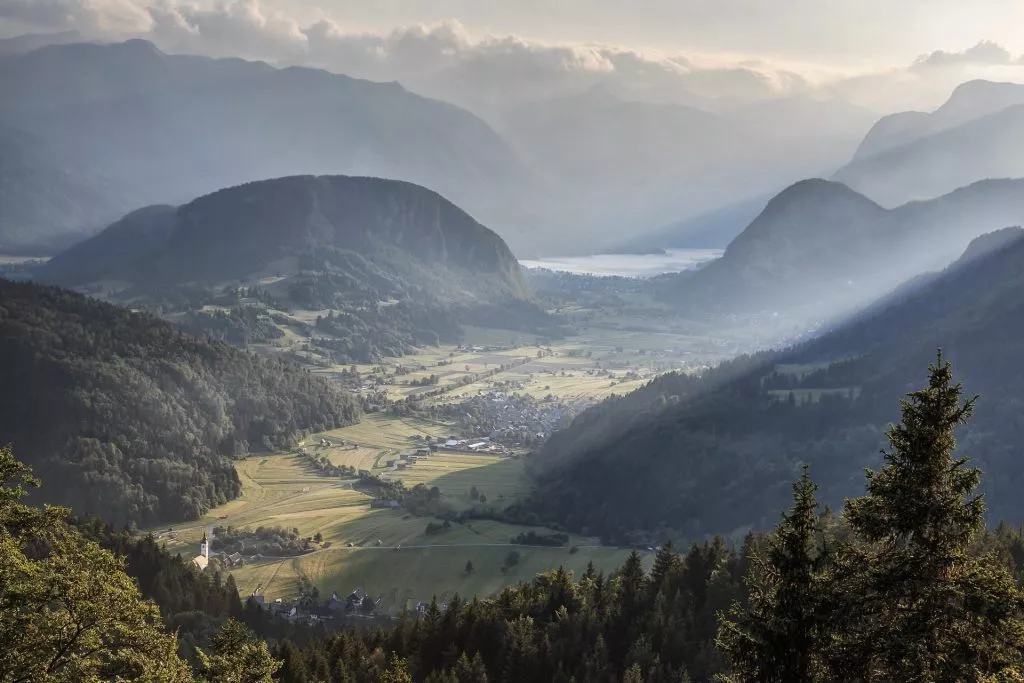
The Pokljuka plateau is covered by spruce forest, perfect for relaxing walks in nature. Because of its high altitude, it is also an excellent starting point for easy hikes to high mountains, like the hike to Viševnik, with an up-close view to Triglav.
Mojstrana and the Triglav Alpine Valleys
From Bled, go past the Vintgar gorge and through the Radovna valley and Lake Kreda to arrive in the small alpine village of Mojstrana. The village’s history has always been closely connected with the mountains surrounding it, as priest Jakob Aljaž here bought the land on top of Triglav, built the turret and kept the peak Slovenian, in a time where there the mountains here were under a lot of German influence. If you’re a fan of history and mountains, you’re going to love the Slovenian Alpine Museum situated in the village.
Mojstrana is situated right at the beginning of the three Triglav Alpine valleys – Vrata, Krma and Kot. Both Vrata and Krma can be reached by car and are a paradise for any outdoor enthusiast, regardless of how much energy they would like to spend. In Krma, you can enjoy a walk past green meadows, surrounded by steeply-rising surrounding mountains and enjoy an authentic meal in the Kovinarska hut at the end.
The Vrata valley offers even more beautiful sights, the first of these being the 52 metres high Peričnik waterfall, behind which you can even walk! If you continue up the valley along the Triglavska Bistrica river, you’ll arrive at the Aljaž hut from where you can stare in awe at the mighty Triglav north face, rising 1200 metres from the valley, ending in the highest peak of the country.
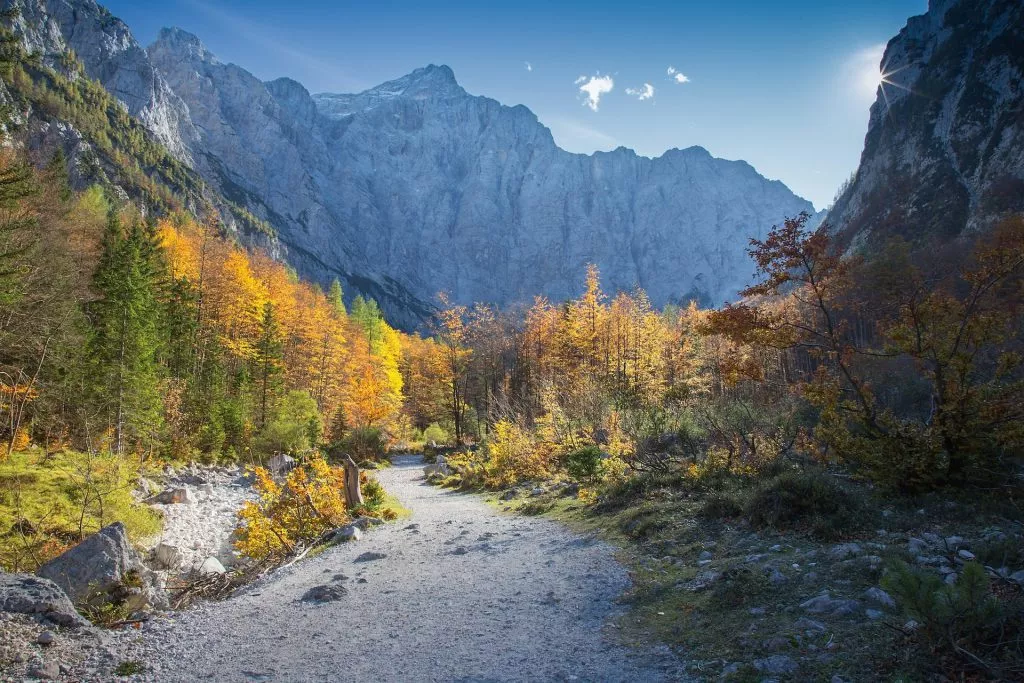
Upper Sava Valley and Kranjska Gora
If you continue down the main road along the Sava Dolinka river, you will soon arrive in Gozd Martuljek for one of the more magnificent views of the Julian Alps from the valley. The panorama is characterized by the sharp peak of Špik with its neighbours and is a must-stop for some photos.
If you’re also up for a short hike, walk for half an hour to reach the Lower Martuljek Waterfall. For an even better view of the Martuljek mountain chain, hike past the Jerman waterfall to Srednji Vrh village.
Just a short drive ahead you will reach Kranjska Gora, the all-year-round hotspot for outdoor activities, especially winter skiing. From there you can go to the Zelenci Nature Reserve and walk on the wooden footpath to the viewing platform above the emerald spring lake surrounded by mountains. You can also visit the Planica Nordic Centre with the once biggest ski flying hill in the world. Optionally, hike from Planica between the grey peaks in the Tamar Valley to the authentic hut for a meal.
On your drive south from Kranjska Gora, stop by at Lake Jasna and replenish yourselves with a drink and a view of the Julian Alps reflecting in the lake. From the lake, follow the river Velika Pišnica and hike to the end of the Krnica Valley, surrounded by the 2400 metre high peaks all around.
On the western side of the valley lies the scenic Russian road to the Vršič pass, with its 1611 metres the highest pass in the Eastern Julian Alps. On its 50 hairpin bends (“serpentine” in Slovene), you can see the wooden Russian Chapel, built in 1917 in memory of the Russian prisoners of war who died during its construction. Higher up, keep an eye open for the face in the cliffs – the Heathen Maiden, and the natural window in the Prisank north face.
The Valley of the Soča River
After you descend the “serpentine” from the Vršič pass, you reach the valley of the 138-kilometre Soča River, the beautiful emerald river of western Slovenia. Just at the second to last hairpin turn, you can turn off for the short but difficult hike to the source of the Soča river. The river first streams through the Trenta Valley settled with charming settlements with traditional homesteads of wood and stone.
Continue driving along the river and stop by to rest by the emerald green pools of the Soča Gorge. Turn right at the Great Soča Gorge and continue into the pristine Lepena Valley with the Lepenjca stream. For the most relaxing experience there, visit the Šunik Water Grove and take a moment to the melody of water running over moss-covered rocks.
Soča valley is also home to many water sports. For a more adventurous day, try out some of the more wild activities on the Soča river like rafting, kayaking or canyoning.

Make the most of your trip
Visiting all of these attractions would mean more than 250 kilometres of driving, never mind the relaxing, hiking and walking, which are probably the more desirable part of your trip. That’s why we recommend you split your exploration of the Triglav National Park into multiple days.
To make the most of your trip, it’s best to split them off into areas as described above. For a great day trip, you can combine the Triglav Valleys, Upper Sava Valley and the sights around Kranjska Gora into a one-day Triglav National Park Tour from Ljubljana.
To shorten your drive back from the furthermost region of the Soča Valley and make it a circular trip, you can board a motorail train in Most na Soči that will take you under the Julian Alps through the longest tunnel in Slovenia to Bohinjska Bistrica. What’s even better is that on the way to the train, you can also visit the alpine towns of Bovec, Kobarid and Tolmin.
For an alternative to the above, drive through the idyllic alpine village of Log pod Mangartom and across the Predil pass to Italy. Stop by the beautiful Predil Lake (“Lago del Predil” in Italian), drive through Tarvisio and rest by the beautiful Fusine Lakes with the view of the third highest mountain in Slovenia, Mount Mangart, in the background. After that, just drive back across the border to Slovenia and you’re right back in Kranjska Gora.
Cycling Tours
Most of the sights described above can be easily reached by bike, which you can either transport with your car or rent in your starting town. As for a few exceptions, there aren’t any steep climbs on our ride to reach the most beautiful parts of the Park.
Your cycling tour can get even better where there is a bike track separate from the road. The most beautiful example of this is a bike tour from Mojstrana to Zelenci Nature Reserve, accompanied by the constant views of the Julian Alps when riding through the Upper Sava Valley.
For a few days of riding around the Park, a cycling holiday around the Bled area is also a great choice. With an electric mountain bike, you can discover the vast forests of Pokljuka and Jelovica plateaus with their hidden alpine pastures and peaceful gravel roads.
Those looking for more of a challenge are also in the right place. With its 800 of elevation gain, Vršič pass is a must-do for every road-cycling enthusiast. For the ultimate Slovenia cycling experience, combine it with Pokljuka plateau, the Mangart saddle and the Predil pass for a perfect Julian Alps road cycling holiday.
Hiking Tours
Triglav National Park wouldn’t be the same if it would have been interspersed with roads. That’s why the most pristine natural jewels can be only reached by hiking, which is still the best way to explore the park in full.
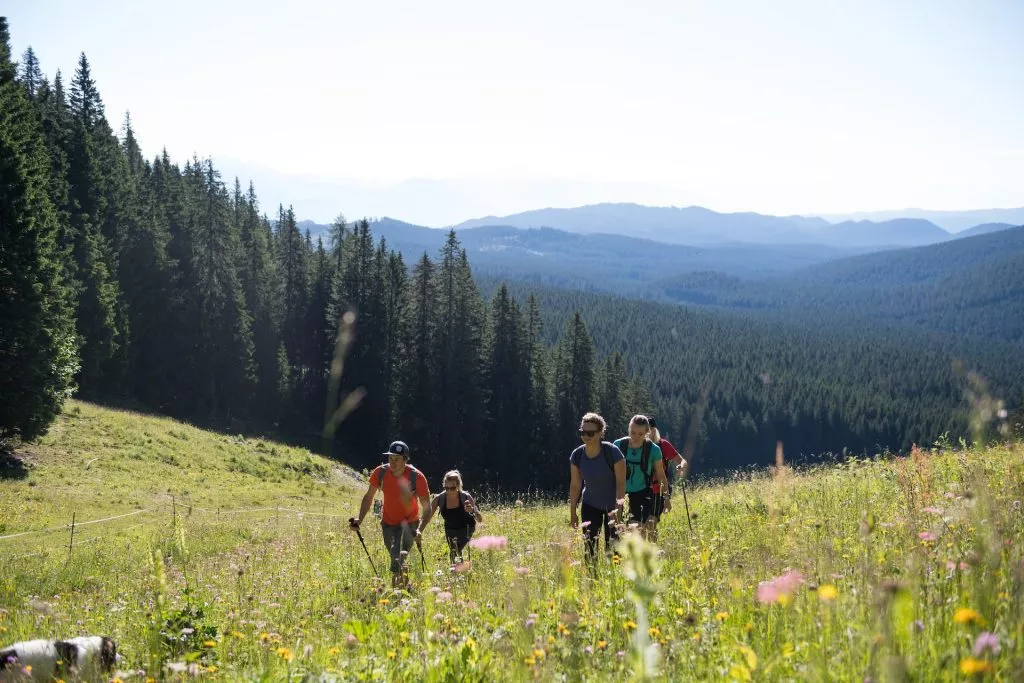
The Park is home to many trails of all difficulties. That means that it is also suitable for those who want a less strenuous experience, while still being on their feet. For example, take a week driving around the Triglav National Park on a walking holiday, hiking on trails that take you to places that you cannot reach by car, while the walking is mostly leisurely.
Of course, you need to work a little bit to reach the untouched beauty of the park. For those ready for a more sporty way to enjoy their days in Slovenia, hiking hut to hut in the diverse mountainous landscape of the country is the way to go.
Other Adventures
The Park’s terrain is so diverse that it is a space for many different activities besides hiking and biking. As we already mentioned, the rivers are often a good spot for kayaking, rafting or canyoning, and the lakes that are not in the high-altitude like Lake Bohinj and Jasna are also perfect for swimming. As a different way of moving in the mountains, two popular activities are rock climbing and trail running, both becoming increasingly popular.
During winter, lots of these summer activities are not possible anymore, but a bunch of new ones are. Most of the mountains become a great spot for ski-touring or snowshoeing, while you can also find a lot of tracks for cross-country skiing. Sometimes one of the waterfalls we can marvel at through the year freezes in the winter, and you can also go ice climbing.



